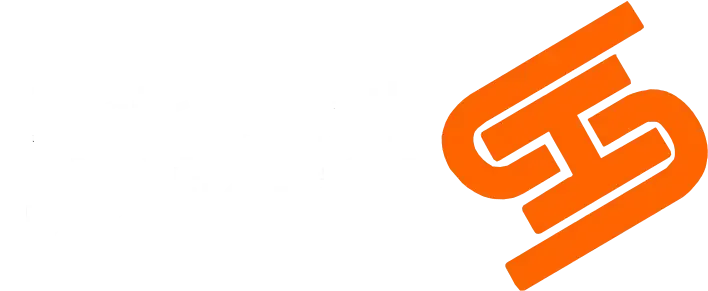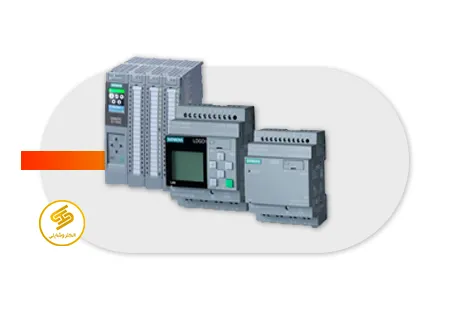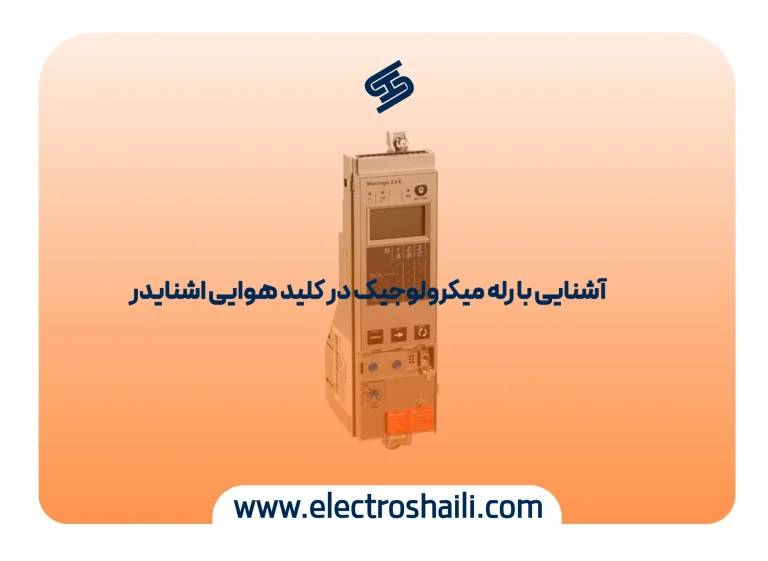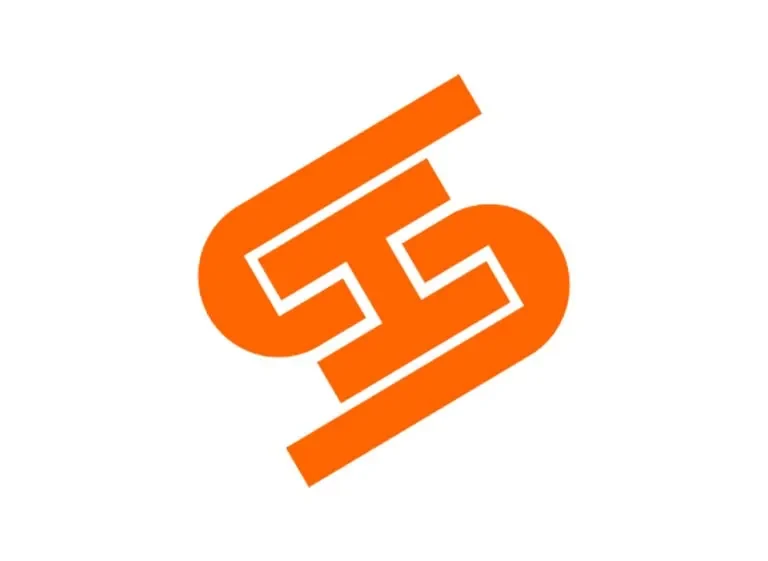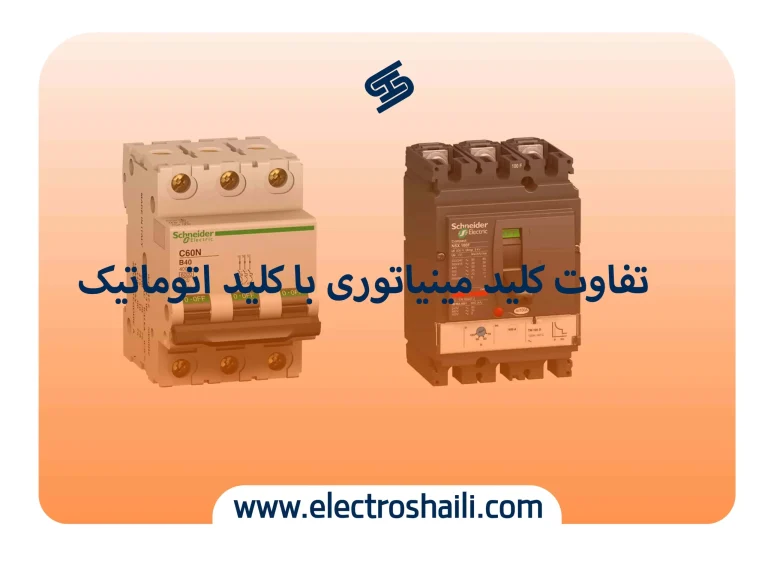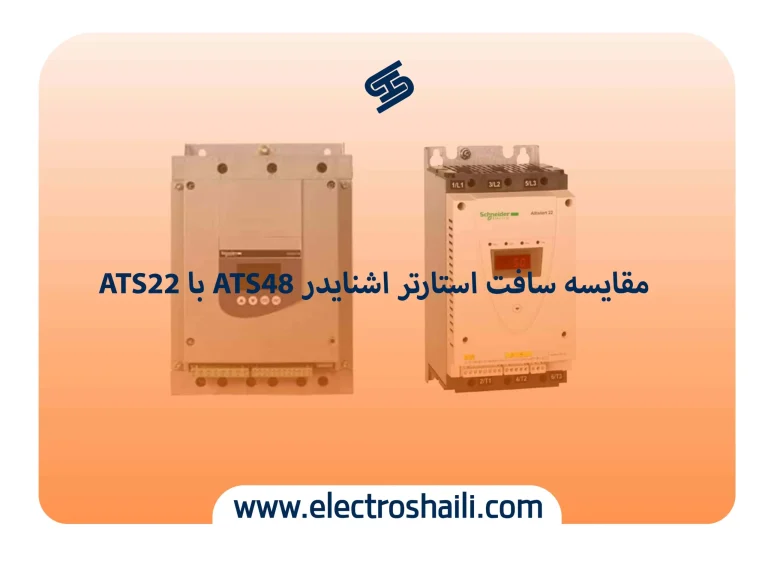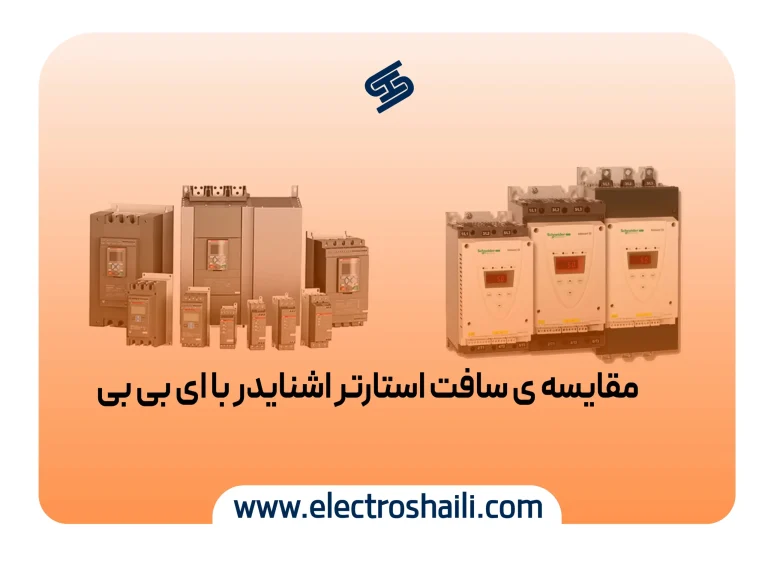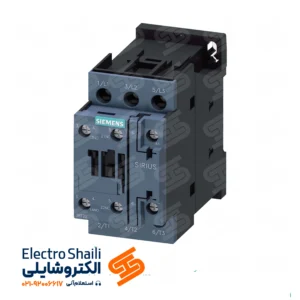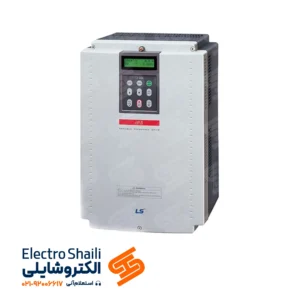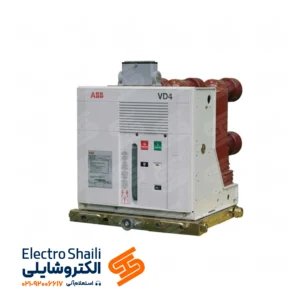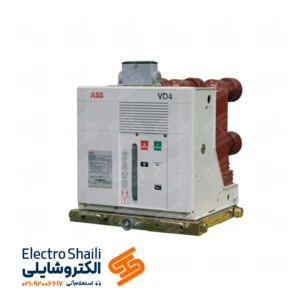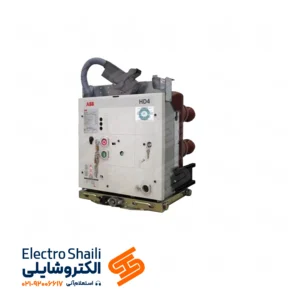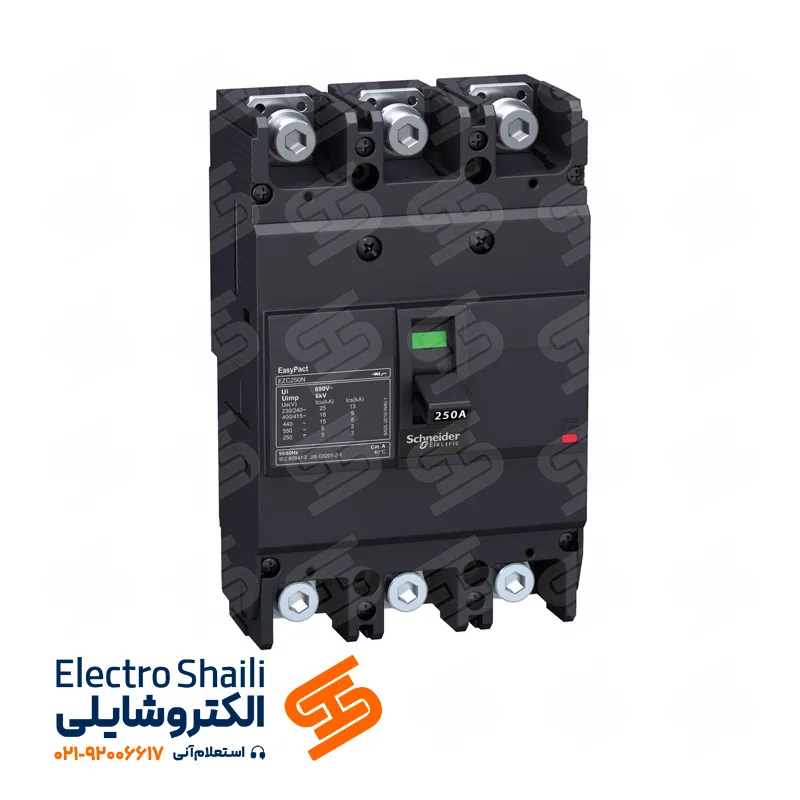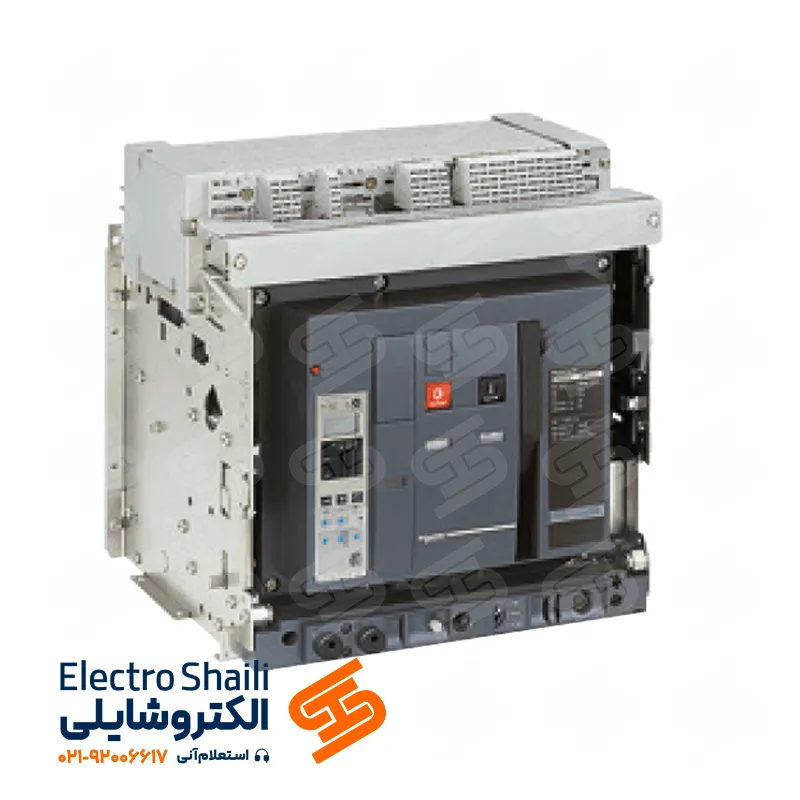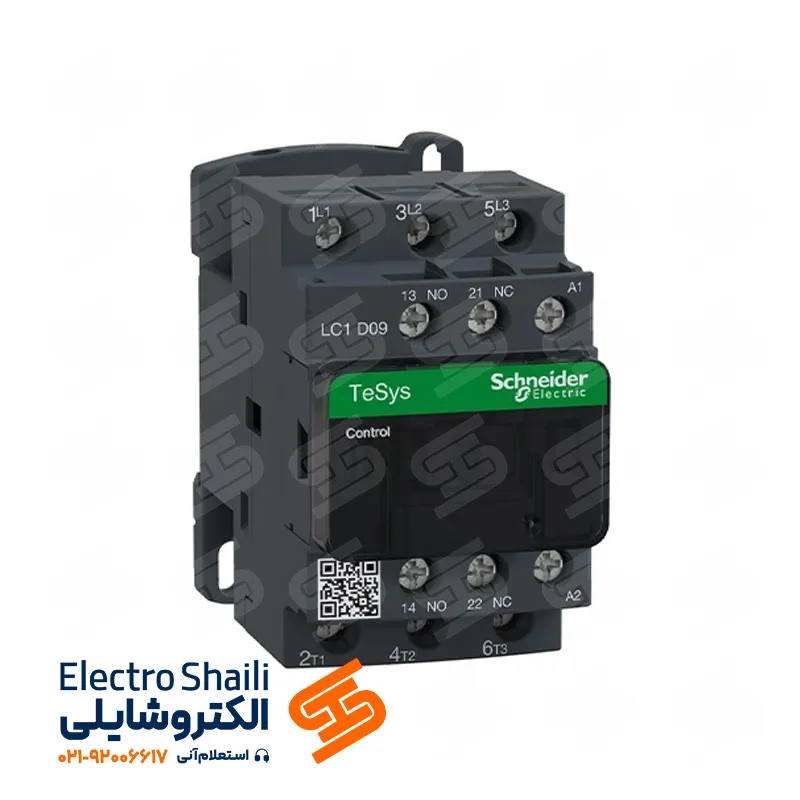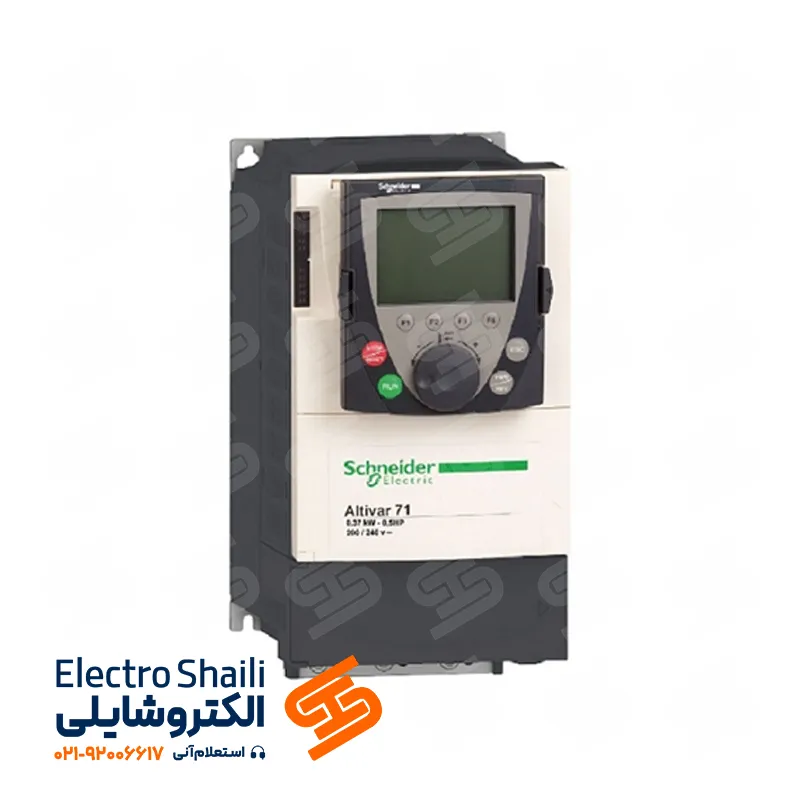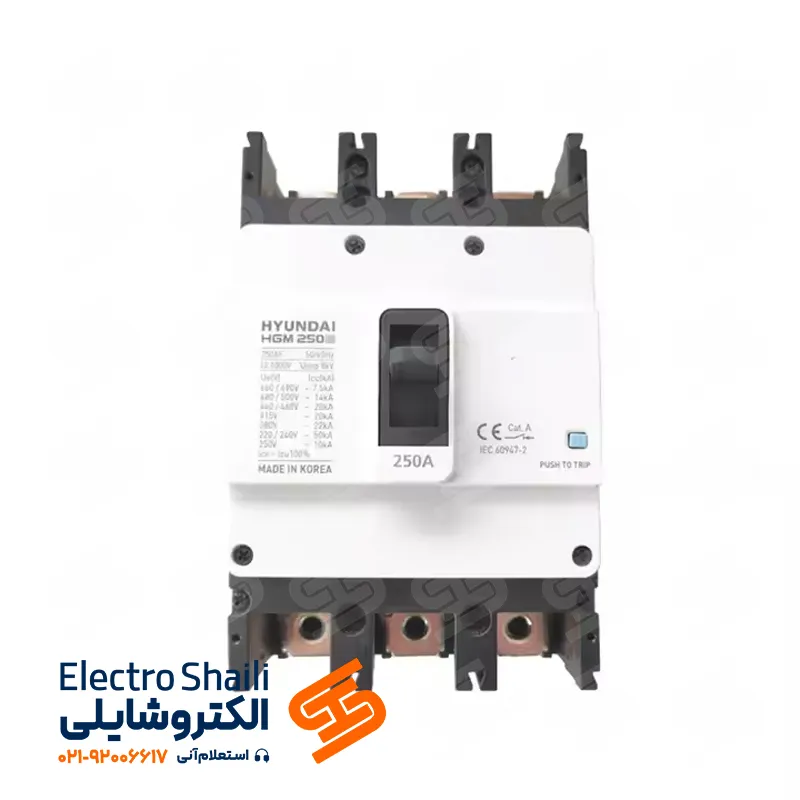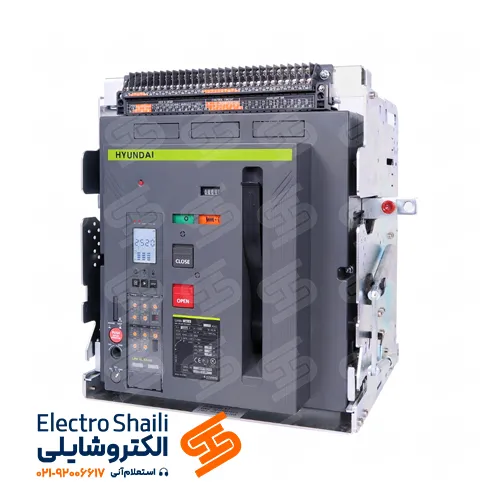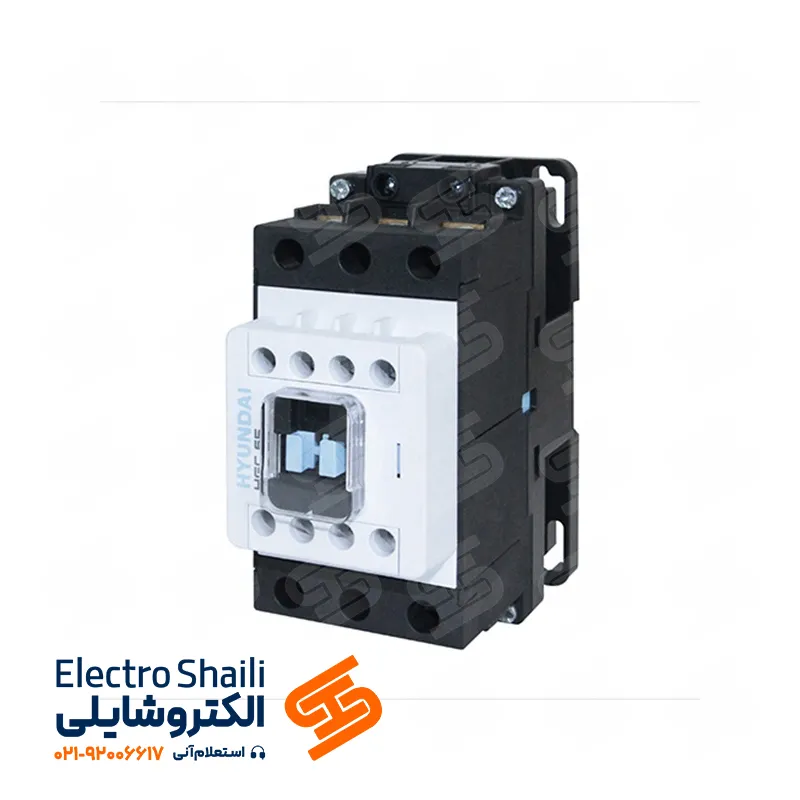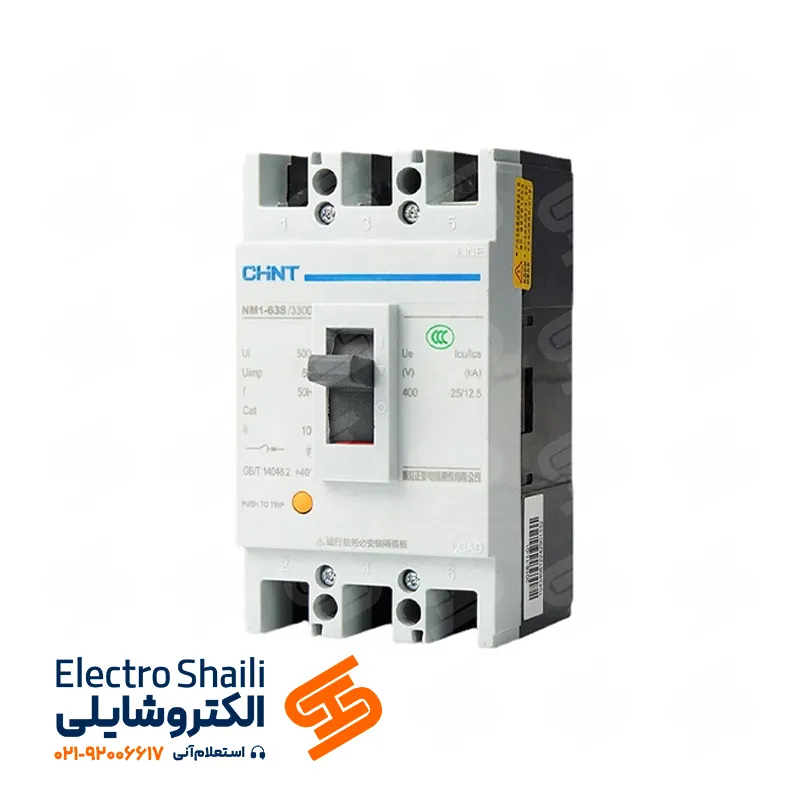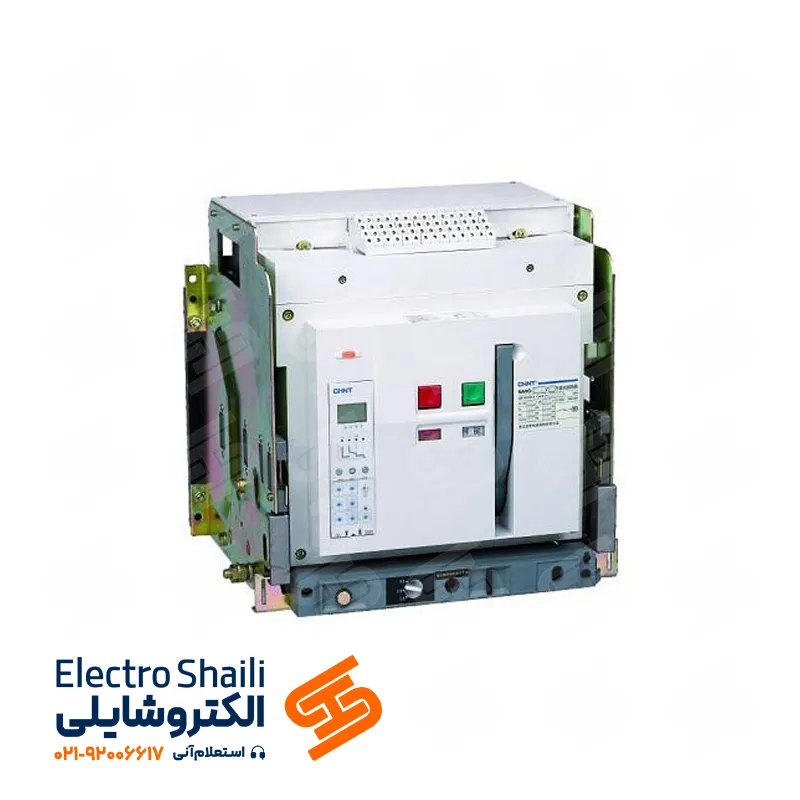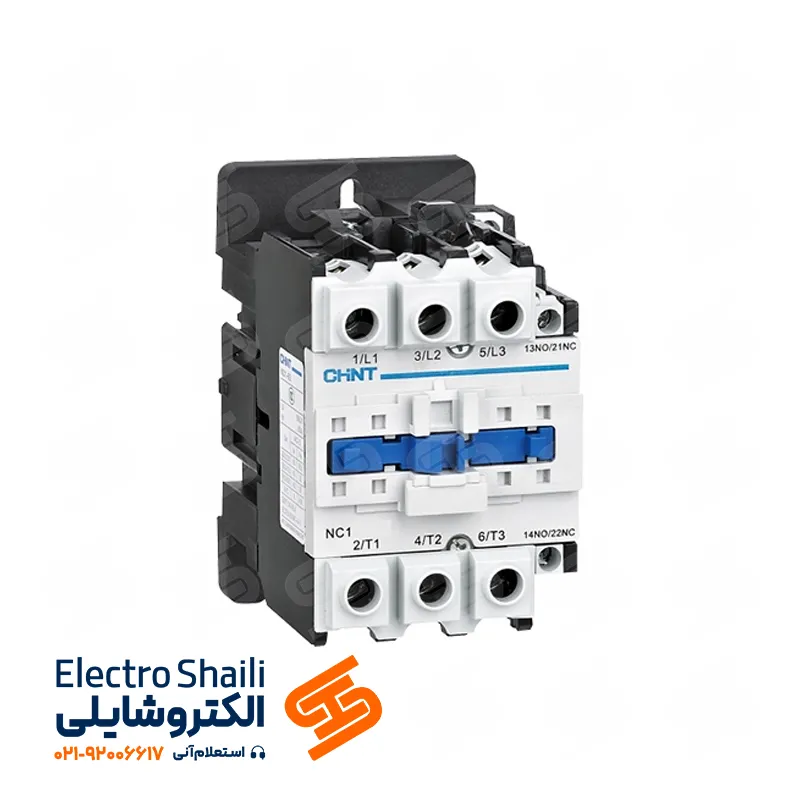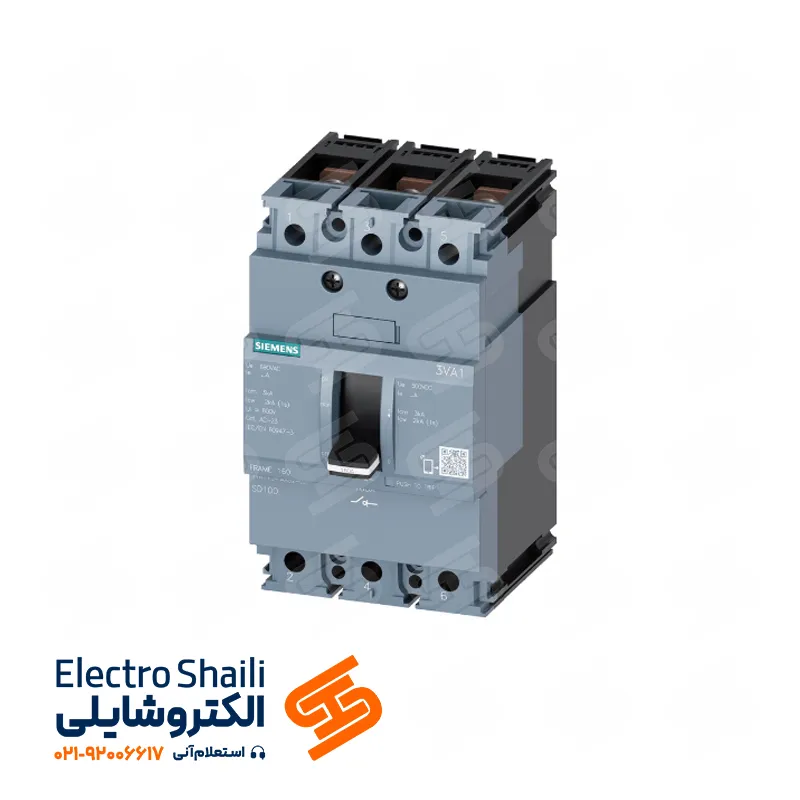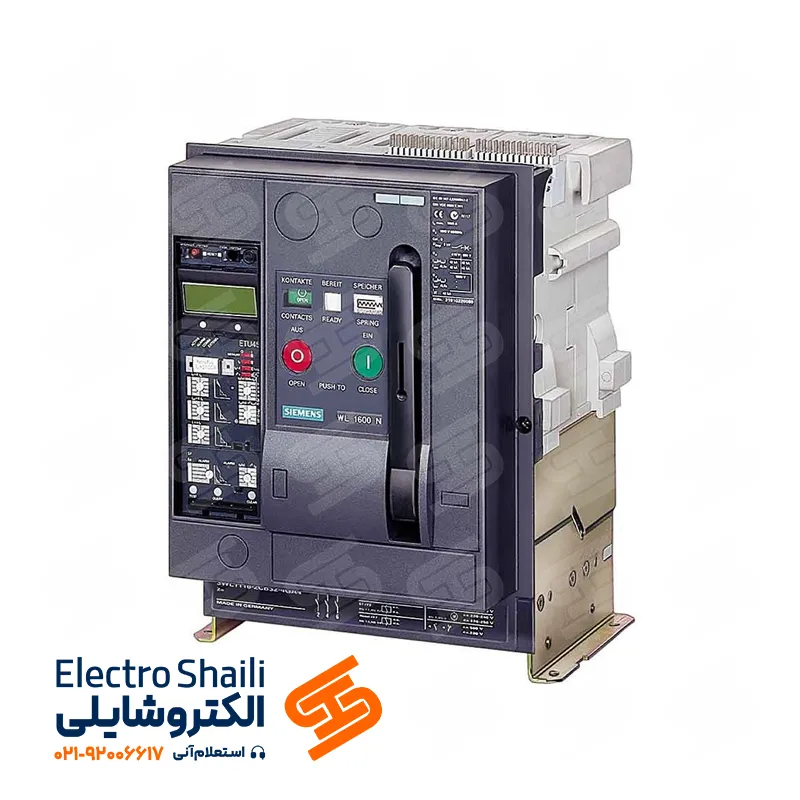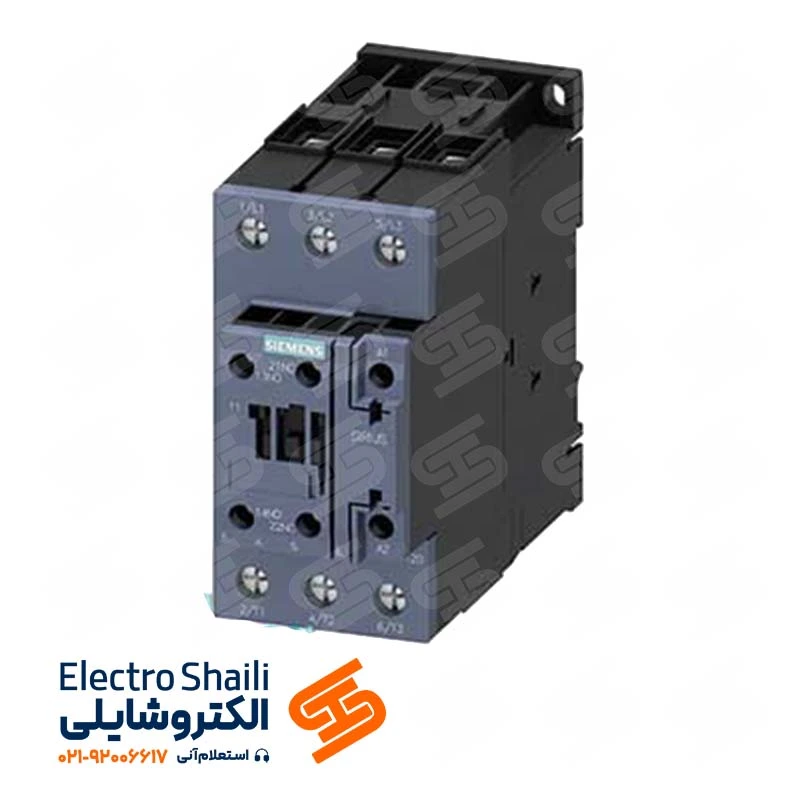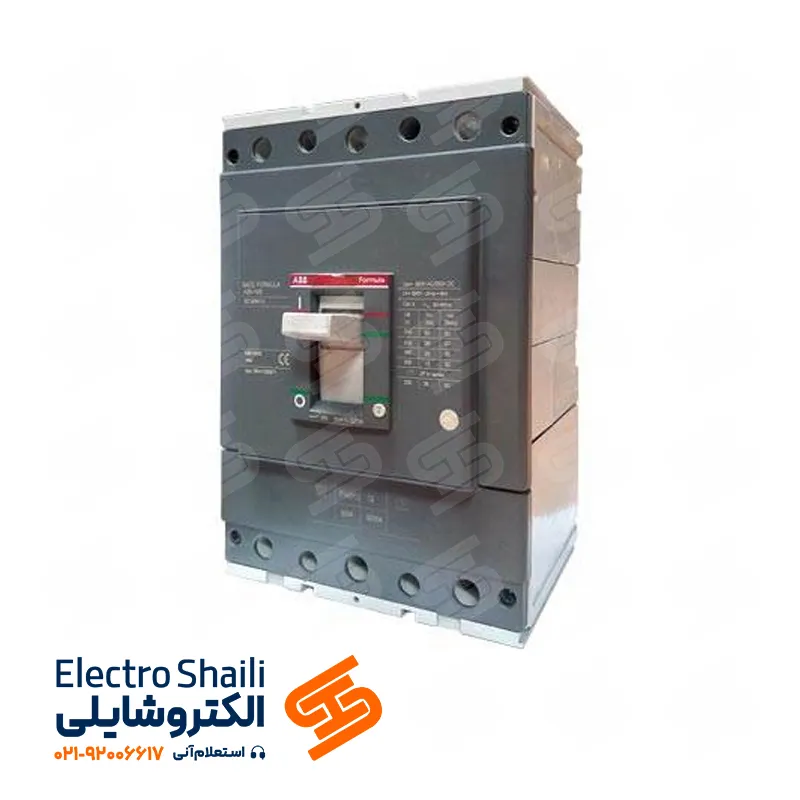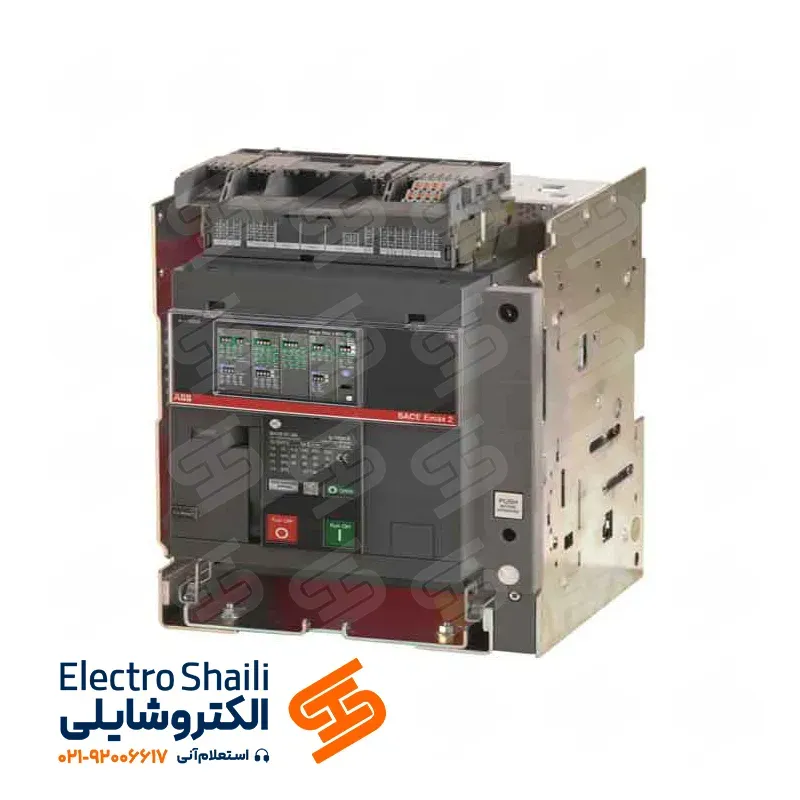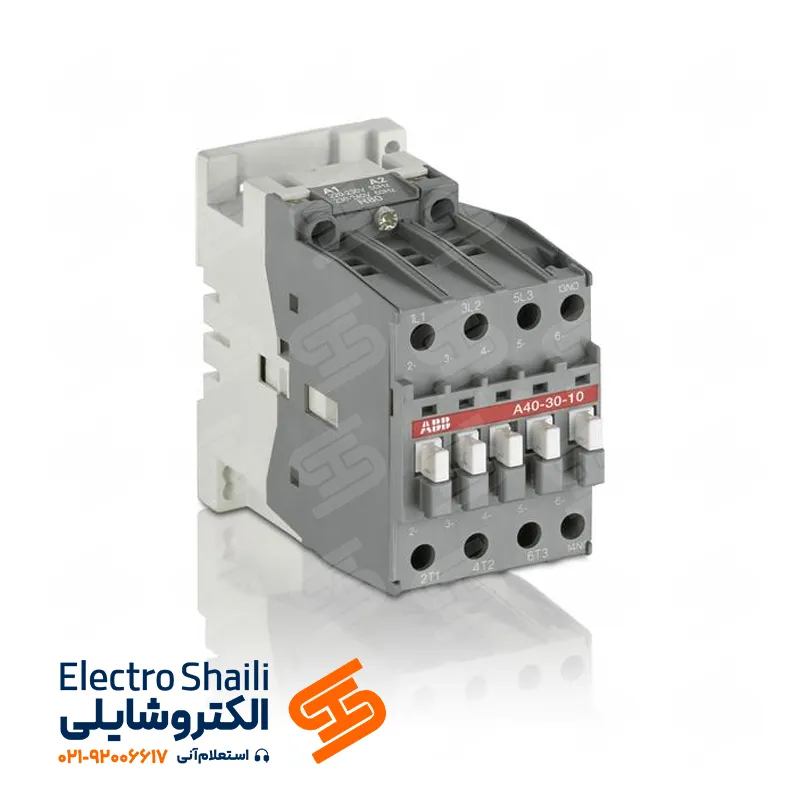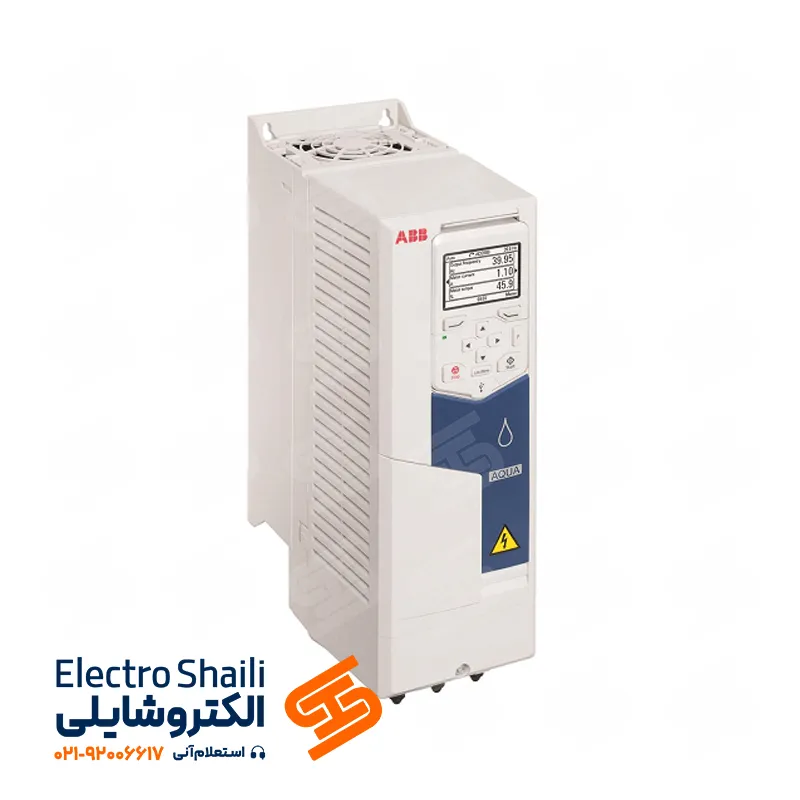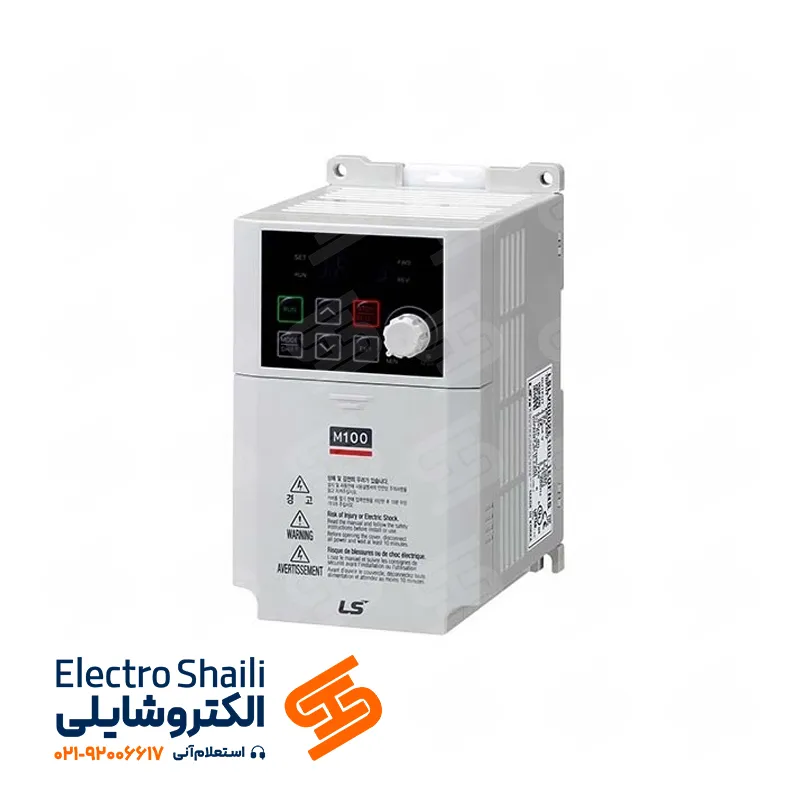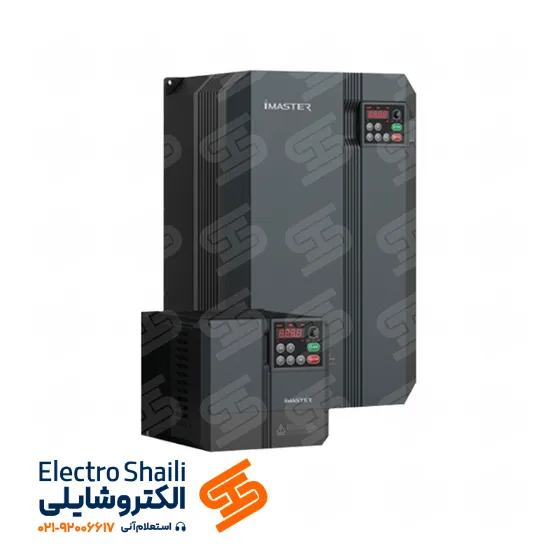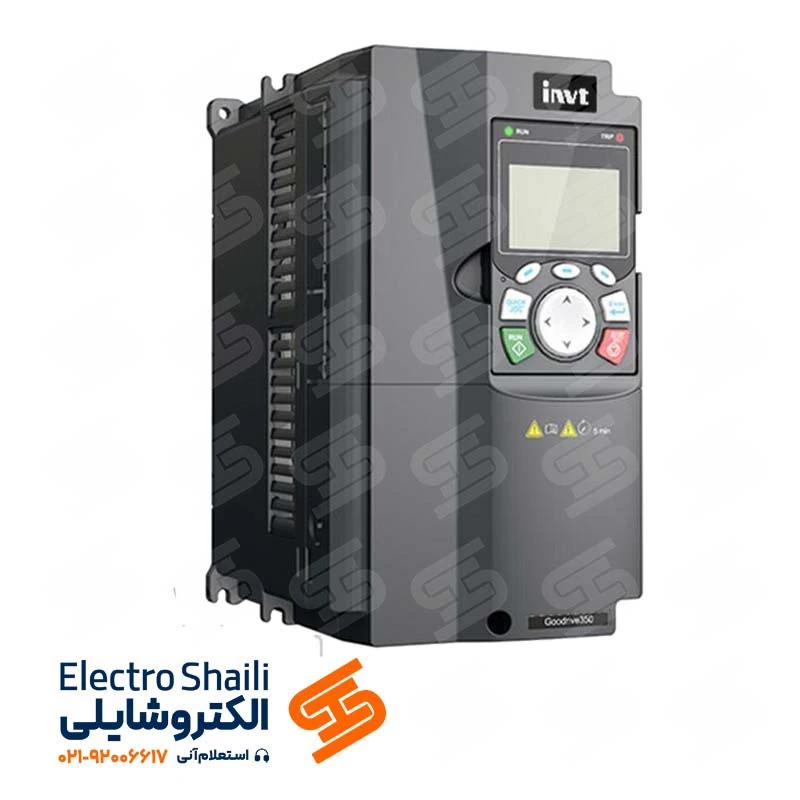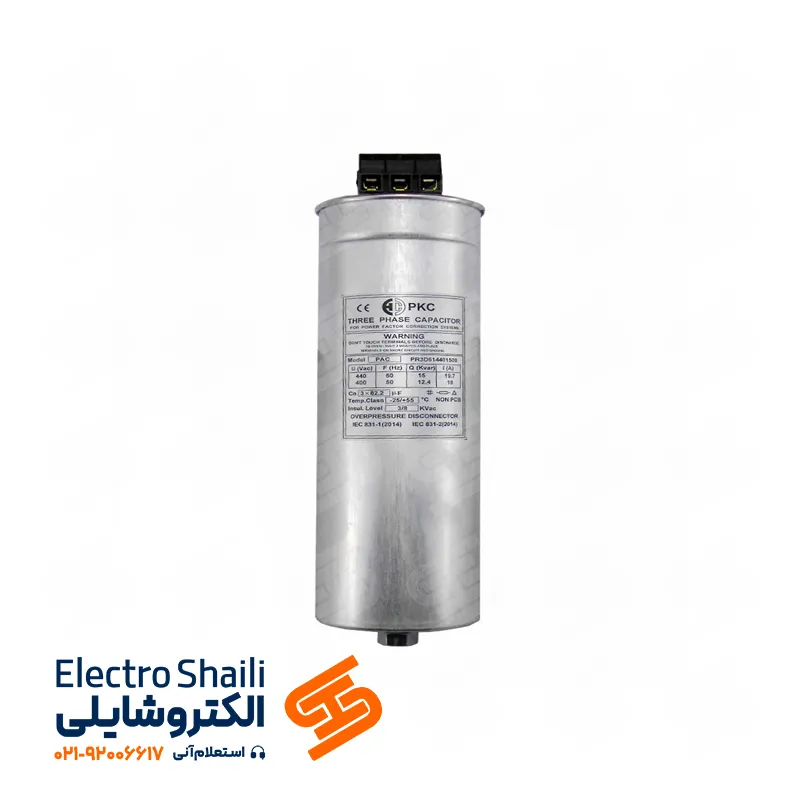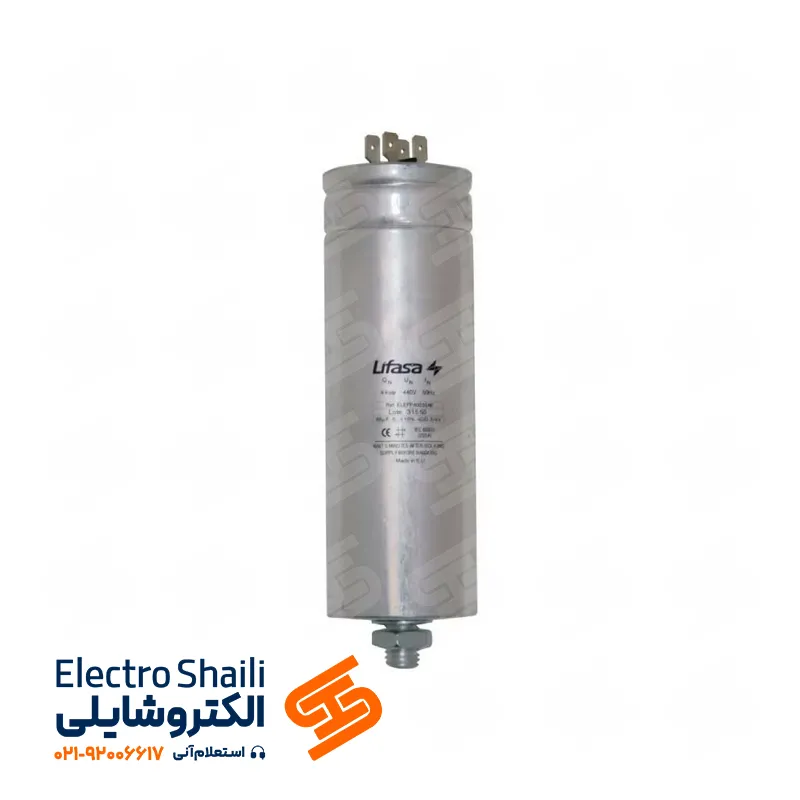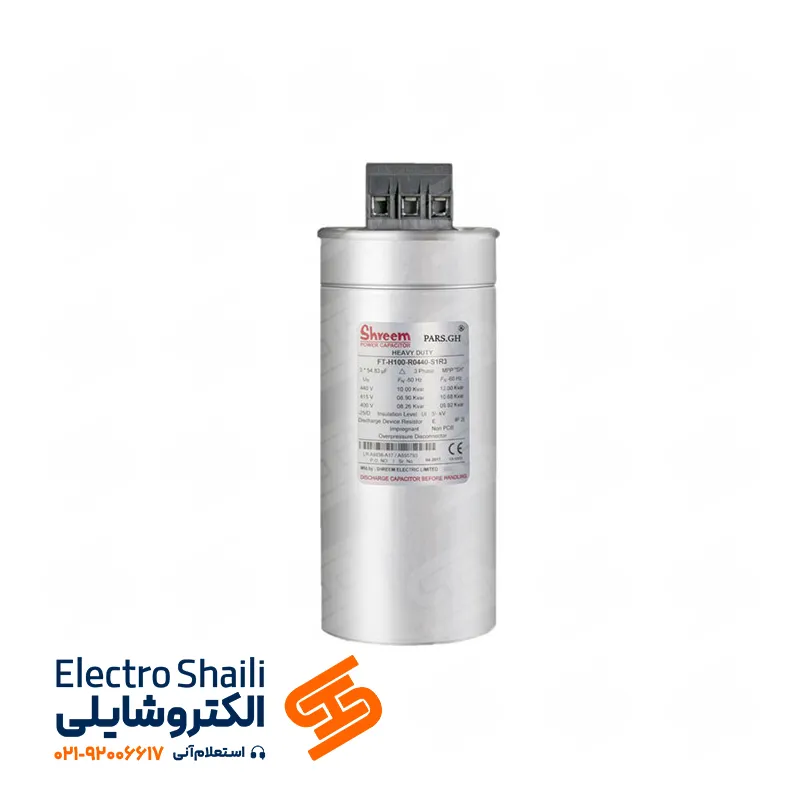buy siemens plc from Iran
Siemens PLC (Programmable Logic Controller) is one of the most well-known and powerful industrial control systems in the era of Industry 4.0. Using advanced Siemens PLC technology, you can control your manufacturing processes and operations automatically and with high precision.
Siemens PLC is a powerful and flexible controller capable of managing and controlling devices, production lines, and industrial systems. With Siemens PLC, you can easily configure, program, and control the performance of production systems.
With Siemens PLC technology, you can experience improved efficiency and productivity in your industry. This powerful system has the capability to collect and analyze data, enabling you to make intelligent decisions regarding process optimization and waste reduction.
Using Siemens PLC, you can easily manage complex industrial automation systems. This flexible system, with extensive capabilities for connecting peripherals and sensors, allows you to have complete control over your processes.
Siemens PLC, combining modern technology and wireless data transfer capabilities, provides advanced features in Industry 4.0. By using Siemens PLC, you can confidently enter a new era of smart and connected production.
Siemens PLC is one of the most widely used and powerful industrial control systems employed in various industries. This system, with its advanced technologies and unique capabilities, helps companies control their processes automatically and precisely. In this article, we will explore all important aspects of Siemens PLC.
Different Series of Siemens PLC
Siemens LOGO! Series
LOGO! 8.4 is an advanced solution that utilizes cloud connectivity to enhance monitoring and process management. Below is an analysis of its key features and benefits:
End-to-End Connectivity: LOGO! 8.4 provides comprehensive connectivity solutions, ensuring seamless communication across the system. End-to-end connectivity is crucial for efficient monitoring and management of processes.
Remote Access: With LOGO! 8.4, users can easily access programs remotely. This feature is valuable for managing processes from different locations, increasing flexibility, and reducing the need for physical presence.
Cloud Connectivity Solutions: LOGO! 8.4 supports pre-configured cloud connectivity solutions, making it convenient for users to connect with popular cloud platforms. This can improve data storage, analysis, and access.
MQTT Communication: The use of independent and open MQTT communication is a powerful feature. MQTT (Message Queuing Telemetry Transport) is a lightweight and efficient protocol for reliable data exchange between devices and systems.
Email Sending Capability through Software: LOGO! 8.4 includes the capability to send emails through the software. This feature allows users to configure data-based alert systems, sending timely alerts for events or significant changes in the system. This enhances system performance and facilitates quicker decision-making.
Performance Improvement: Users can benefit from performance improvements with LOGO! 8.4, ensuring a more efficient and responsive system. This is crucial for real-time monitoring and proactive management of processes.
User-Friendly: Despite advanced capabilities, LOGO! 8.4 maintains user-friendliness. This is important to ensure that users, even those with limited technical experience, can navigate and use the system effectively.
Proactive Management Simplicity: System features are designed for the simplicity of proactive management of processes. This includes monitoring, analysis, and timely response to potential issues, contributing to overall system reliability.
Extensive Service Support: LOGO! 8.4 offers extensive service support, ensuring users have access to necessary resources and assistance. This is crucial for continuous maintenance and optimization of the system.
In conclusion, LOGO! 8.4 seems to be a comprehensive solution that integrates advanced connectivity features with user-friendly characteristics, facilitating efficient monitoring, management, and optimization of processes. The integration of cloud connectivity, MQTT communication, and email sending capability through software adds significant value to the overall system.
SIMATIC S7-1200 Series
Siemens PLC Siemens S7-1200 series is suitable for both simple industrial automation and complex automation tasks. S7-1200 is approximately 40% smaller than its predecessor, S7-200, but twice as fast! This controller is ideal for standalone applications, with integrated Ethernet/Profinet interfaces, and digital (TOR) and analog inputs/outputs. It can perform technological tasks such as counting, measuring, PID control, motion control, and recording features. The product is available in four CPU types (1211C, 1212C, 1214C, 1215C, and 1217C) with 24 VDC and 230 VAC supply voltage.
In line with Siemens’ commitment to “Totally Integrated Automation” (TIA), S7-1200 products and STEP 7 Basic programming software provide tools to create your own automation program. Compact dimensions, low cost, and powerful performance features have turned S7-1200 into an ideal solution for controlling small applications. Examples in this document will guide you in your initial steps in the S7-1200 world and quickly teach you the fundamental principles.
SIMATIC S7-1200 offers an efficient and highly precise automation solution for fast, flexible, and accurate automation tasks. With its modular and flexible design, along with a PROFINET interface for programming and connection to HMI, as well as communication with other devices, it has its own special features. Connectivity with devices from other manufacturers is also possible using Ethernet protocols. Due to its modular design, SIMATIC S7-1200 products are suitable for multiple uses and diverse applications.
SIMATIC S7-1200 is available in various CPU models and can be expanded based on individual needs by adding different components:
– Communication module
– Switching module
– Input and output modules (analog and digital)
– Multi-directional GSM antenna
– Add-on
– Software
– Memory card
SIMATIC S7-1200 CPUs can connect to a maximum of eight signal modules and three communication modules. For easy Ethernet connection, the small CSM 1277 Switch module can be used.
Powerful Products of the SIMATIC S7-1200 Series
In Electroshele, you can find innovative products from the SIMATIC S7-1200 series in the control technology category with excellent price-to-performance ratios. Special emphasis can be placed on the efficient interaction of Simatic S7-1200 and engineering software SIMATIC STEP 7 Basic and SIMATIC HMI Basic Panel. This easy-to-use programming software provides drag & drop programming, while the Panel Basic controls and graphically tracks devices and installations.
In Electroshele, you can combine a wide range of SIMATIC S7-1200 collection elements at reasonable prices. Now, combine modules suitable for your program!
SIMATIC S7-1500 Series
With a broader environmental range, SIMATIC S7-1500 is almost usable anywhere. Many controllers can operate in a temperature range from -30 degrees Celsius to +60 degrees Celsius and at altitudes up to 5,000 meters as a standard. For needs beyond this, numerous SIPLUS controllers are available.
A modular, scalable, and seamlessly integrated system with an IP20 protection class
A system solution for various types of discrete automation applications
Maximum performance with excellent usability
Configurable in the Totally Integrated Automation Portal with STEP 7 Professional V12 or higher
Performance
Increased performance through faster command execution
Development of the language
Various new data types
Faster connection to the backplane bus
Optimized code generation
High-performance communication:
Standard PROFINET IO interface (2-port switch); from CPU 1515-2 PN onwards, one or more additional integrated PROFINET interfaces, for example, for network separation, connection to other PROFINET devices, or for high-speed communication as an I-Device
OPC UA server (data access) and client as an optional executive option for easy connection of SIMATIC S7-1500 to non-Siemens devices/systems
Expandable with communication modules for bus systems and point-to-point connections
Integrated Technology of Siemens PLC SIMATIC S7-1500
Integrated motion control without the need for additional modules:
Standard blocks (PLCopen) for connecting analog drives and PROFIdrive capability
Motion control capabilities, positioning axes, relative synchronization (without specifying synchronized position), external encoders, output cams, and sensors are supported.
Broader tracking functions for all CPU tags for real-time detection and troubleshooting and finding random faults; for effective commissioning and optimization of drives and controls
Comprehensive control capabilities:
For example, easily configurable blocks to automatically optimize control parameters for optimal control quality
Additional functions via existing technology modules:
For example, high-speed counting, position sensing, or measurement functions for signals up to 1 megahertz
Safety Integration in the SIMATIC S7-1500 Series
Protection of individuals and machinery – within the framework of a complete integrated system
SIMATIC S7-1500(T)F controllers are secure for processing standard and safety programs in a unified controller. Safety and standard applications are created with uniform editors in the TIA portal; in other words, safety data is evaluated just like standard data in a standard application. Due to this integration, the system benefits from the comprehensive features and capabilities of SIMATIC for safety applications.
Redundant Systems
Redundant S7-1500R/H processors for applications where PLC access is crucial. Both processors communicate through a PROFINET IO ring with I/O stations. Synchronization for S7-1500R is done through this ring, or separately via FOC synchronization cables for S7-1500H. In case of a processor failure, the backup processor automatically takes over control of the process. No data is lost, and the process can continue very quickly. The PROFINET IO ring ensures that all nodes remain accessible in case of a fieldbus interruption.
Engineering follows the standard processor’s engineering. TIA portal and redundant processors handle program and data synchronization without any additional cost for the user.
Integrated Security in the SIMATIC S7-1500 Series
Protection of information based on password against unauthorized reading or modification of program blocks.
Copy protection for increased protection against unauthorized copying of program blocks: With copy protection, individual blocks on the SIMATIC memory card can be linked to their serial number, ensuring that a block will only run when the configured memory card is placed in the CPU.
Four different permission levels for access rights assigned to different user groups. Level 4 protection also allows restricting access to HMI devices.
Enhanced protection against tampering: Unauthorized changes or transfers of engineering data are identified by the controller.
For use with an Ethernet CP (CP 1543-1): Additional protection is available through a firewall, creating secure VPN connections.
Design and Control
Processors with displays for textual information (display simulator tool in the internet):
Displaying information related to article number, firmware version, and serial number of all connected modules.
Configuring IP addresses for processors and additional network settings can be done directly on the display without the need for a programming device.
Direct display of error messages as text messages, meaning reduced downtime.
Unified local connection for all modules and unified potential bridges for forming flexible potential groups simplify inventory storage and reduce wiring effort.
Unified DIN rail in the S7-1500 DIN rail:
Quick and easy installation of additional components such as miniature circuit breakers, relays, etc.
Power Supply:
Current load supply modules (power supply modules) for supplying modules with 24 volts.
System power supply modules for supplying internal electronics of the module via the backplane bus.
System Expansion
Use of up to 30 signal modules, communication modules, and technology modules via the PROFINET IM 155-5 interface module for the ET 200MP I/O system.
No differences in terms of use and system performance in central and distributed operations.
Unified System Diagnostics
Unified system diagnostics for processors are active by default:
Continuous display of system diagnostic information in simple text on the display, TIA portal, HMI, and web server, even for drive messages. Messages are updated even when the processor is in the STOP state.
Unified system diagnostics are integrated into the processor firmware. No user configuration is needed. Diagnostics are automatically updated with configuration changes.
Support for SIMATIC ProDiag S7-1500
ProDiag is a concept for easy fault diagnosis in devices and installations. This concept enhances usability by providing increased access and support for analysis, error elimination on-site, and error detection.
Log data (archives) and recipes
SIMATIC Memory Card:
Removable memory
Firmware update capability
Storage option for STEP 7 projects (including descriptions and symbols), additional documentation, or csv/ASCII files (for recipes and archives)
Easy access to operational data and installation-related configuration data with office tools via SD card reader (bidirectional data exchange with and from PLC)
Integrated web server:
– Easy access to installation-related operational data and configuration data, control state detection, and display of tracking records via a web browser
Approvals and Standards for the SIMATIC S7-1500 Series
SIMATIC S7-1500 is compliant with the following national and international standards:
cULus certification
cULus HazLoc certification
FM certification
ATEX certification (only for 24 volts; not for 230 volts)
UKEX certification
CCCEx certification
CE certification
RCM certification (previously C-Tick)
KCC certification
UKCA marking
IECEx certification (only for 24 volts; not for 230 volts)
EN 61000-6-4
EN 60068-2-1/-2/-6/-14/-27/-30/-32
EN 61131-2
The S7-1500 system is also suitable for operation at altitudes up to 5000 meters.
SIMATIC S7-1500 Control System is a modular control system for various types of automation applications in discrete automation.
With its modular design, fanless execution, easy implementation of distributed structures, and simple control, SIMATIC S7-1500 has become an economical and user-friendly solution for a wide range of diverse tasks.
Applications of SIMATIC S7-1500 include:
Special-purpose machines
Textile machines
Packaging machines
Handling and placement machines
Assembly machines
Palletizing machines
General mechanical equipment manufacturing
Controller manufacturing
Machine tool manufacturing
Installation and commissioning systems
Electrical and electronic industries
Automotive industry
Water and wastewater
Food and beverage industry
Infrastructure (tunnels, traffic control, maritime, airports, etc.)
Several processors with different performance levels and a wide range of modules with various features are available. Safety processors enable the use in safety applications. The modular design allows users to use only the modules needed for their applications. In case of expanding tasks, the controller can always be upgraded with additional modules.
Excellent industrial compatibility due to high electromagnetic compatibility and resistance to shock and vibration make the SIMATIC S7-1500 suitable for various levels of use.
The overall design of a SIMATIC S7-1500 automation system is modular and includes a comprehensive set of modules that can be individually combined. The S7-1500 automation system supports flat configurations where all modules are mounted on a DIN rail (refer to the manual for specific requirements).
A system includes the following:
Controller:
Processors with various performance levels with PROFINET or integrated PROFINET and PROFIBUS interfaces for connecting distributed input/output and communication between the programming device, operator panel, other SIMATIC controllers, or non-Siemens devices.
Different versions of processors are available for SIMATIC S7-1500:
Standard processors (as MFP version: capable of executing C/C++ code on the controller)
Compact processors with digital and analog inputs and outputs, digital and analog counter inputs, and high-speed outputs for performing integrated technology tasks on the processor
Safety processors (as MFP version: capable of executing C/C++ code on the controller) for running standard and safety programs on a single computer
Technology processors with extensive Motion Control features such as speed interpolation, absolute synchronous operation (synchronization by defining synchronous positions), simultaneous motion control, and kinematic control tasks.
Signal modules for digital and analog inputs and outputs.
Technology modules, for high-speed counting, position identification, or measurement functions.
Communication modules and processors for expanding controllers with communication interfaces.
Additionally, the following items can be used if needed:
Power supply modules (PS) to supply internal electronics of S7-1500 modules through the backplane bus if the processor’s output to the backplane bus is insufficient for all connected modules. Also, PS 60 W 24/48/60 V DC HF allows the processor to store its entire working memory (up to 20 megabytes).
Current load supply modules (PMs) for connecting SIMATIC S7-1500 to a supply voltage of 120/230 V AC.
Interface modules for connecting distributed input/output based on S7-1500.
The simple design of SIMATIC S7-1500 serves its versatility and user-friendliness well.
Integrated Backplane: The backplane is integrated into the modules. The modules are connected to each other through U connectors located behind the cages. This saves installation time. Module mounting on the DIN rail S7-1500: Available in various sizes, including a version that can be cut to length. Due to the integrated DIN rail, standard items such as additional terminals, short-circuiting devices, or small relays can be easily connected to the rail. Reliable and user-friendly wiring: Input/output signals are connected through a front 40-pin integrated connector. Mechanical coding between the signal module and the front connector prevents accidental incorrect insertion. For easy wiring, the front connector can be placed in the “pre-wiring” state. In this state, the plug does not yet make contact with the module electronics. This state can also be used for making changes during operation. The user is supported by a printed wiring diagram inside the front cover cap. Front connectors are available in versions with screw terminals or push-in terminals. Both options allow the connection of wires with a core cross-section from 0.25 square millimeters to 1.5 square millimeters (AWG 24 to AWG 16). In addition, wiring for the system is also available via TOP Connect for digital signal modules. This allows the user to quickly and smoothly connect sensors and actuators from the field and simplify wiring inside the control cabinet. For analog modules, connections can be made directly on the module; a shielded connection set that installs without tools is included with the module. Specially designed factory labeling: Label strips for SIMATIC S7-1500 signal modules are available. These DIN A4 sheets can be labeled using a standard laser printer. Automatic printing from TIA Portal is possible without re-entering symbols or addresses. The label strips are designed to maintain a one-to-one relationship between channel or display labeling and the connector when the front cover cap is open. Flexible and scalable station setup: Signal modules and communication modules can be inserted in any way without any limitations. The system configures itself. The maximum configuration includes a central processor with 31 modules (30 modules + 1 power supply). Power supply (PS) is necessary through the backplane bus to supply the internal electronics of the S7-1500 modules if the processor output to the backplane is not sufficient for all connected modules. Small dimensions: SIMATIC S7-1500 is designed to fit properly in the installation space of a SIMATIC S7-300 controller or ET 200M I/O system. Flexible installation: SIMATIC S7-1500 and its modules can be installed both horizontally and vertically for optimal placement in the available space.
Input/Output (I/O) Modules: Various types of modules are available for use in a SIMATIC S7-1500/ET 200MP:
Standard and safety digital input modules
Standard and safety digital output modules
Digital input/output modules
Analog input modules
Analog input/output modules
Analog output modules
Including High-Speed (HS) analog modules with an initial execution time of 62.5 microseconds, regardless of the number of activated channels.
Communication modules for IO-Link and point-to-point communication, connecting to different module classes to provide optimal scalability to users in their application programs. The modules themselves are appropriately labeled:
BA (Basic): Simple and cost-effective modules, without detection and parameters.
ST (Standard): Modules with module or specific group detection and, if necessary, with parameters; for analog modules: accuracy class 0.3%.
HF (High Feature): Modules with specific channel detection and parameter setting, supporting isochronous mode, and for analog modules: accuracy class 0.1%, increased electromagnetic compatibility, and galvanic isolation.
HS (High Speed): Modules with very short filter times and conversion times for very fast applications, supporting isochronous mode; for example, 8-channel analog modules with an initial execution time of 62.5 microseconds, regardless of the number of activated channels.
Accessories for I/O modules:
Labeling: For placement in SIMATIC S7-1500 I/O modules (10 DIN A4 sheets with 10 strips each, pre-cut, for printing with a standard laser printer; available in various colors: aluminum gray).
Shield connection: A simple shield connection set that can be installed without tools is available for the SIMATIC S7-1500 system (analog modules and technology modules). This includes a 24V DC power supply, a protective bracket, and a universal protective terminal. It is designed to be used for a single fine-wire cable, multiple fine-wire cables, or a fine-wire cable. Separating 24V DC and measurement signals in one, and also connecting with low-impedance between protection wires and safety signal wires with high EMC interference resistance and high resistance to interference ensures compliance with interference specifications. Integrated 40-pin Front Connector:
Additional Accessories: Such as front doors for I/O modules or self-tapping U connectors for the backplane.
Communication Interfaces of SIMATIC S7-1500:
1. PROFINET IO IRT Interface (2-port switch):
– Embedded in the processor (PROFINET RT only for S7-1500R/H).
– Defined response times and precise behavior of the factory-installed chip.
2. Communication Modules:
– For connection to industrial Ethernet systems PROFIBUS and PROFINET.
– For point-to-point connections.
3. Additional PROFINET Interfaces:
– From CPU 1515 onwards, all processors have one or more additional integrated PROFINET interfaces with separate IP addresses, allowing for network separation or connection of additional PROFINET IO devices.
– From CPU 1516-3 PN/DP onwards, PROFIBUS devices can be connected via the integrated PROFIBUS interface.
– Processors without an integrated PROFIBUS interface can be easily expanded using a PROFIBUS CM module.
Process Communication via PROFINET IO:
SIMATIC S7-1500 connects to the PROFINET bus system via the PROFINET IO interface, enabling distributed automation configuration with defined response times and precise behavior of the factory-installed chip.
Connected I/O Controllers:
– SIMATIC S7-1500
– SIMATIC S7-1200
– ET 200S CPUs with PROFINET interface
– ET 200SP CPUs
– ET 200pro CPUs
– SIMATIC S7-300 (via CPUs with PROFINET interface or CPs PROFINET)
– SIMATIC S7-400 (via CPUs with PROFINET interface or CPs PROFINET)
– SIMATIC ET 200 (via CPUs with PROFINET interface)
I-Devices or Connected Devices:
– SIMATIC S7-1500
– SIMATIC S7-1200 (version 4.0 or later)
– ET 200S CPUs with PROFINET interface
– ET 200SP CPUs
– ET 200pro CPUs
– SIMATIC S7-300 (via CPUs with PROFINET interface or CPs PROFINET)
– SIMATIC S7-400 (via CPUs with PROFINET interface or CPs PROFINET)
– Distributed ET 200 devices
– HMI devices acting as direct key modules
– Field devices
Process Communication via PROFIBUS DP:
SIMATIC S7-1500 (not S7-1500R/H) connects to the PROFIBUS DP bus system either through a communication module or through processors equipped with a PROFIBUS DP interface. Processors or communication modules with PROFIBUS DP interface enable high-speed distributed automation configuration with simple usability.
Connected Controllers/Masters:
– SIMATIC S7-1500 (not S7-1500R/H)
(via processors with PROFIBUS DP interface or PROFIBUS DP communication modules)
– ET 200S CPUs (with PROFIBUS DP interface or PROFIBUS DP CP)
– ET 200pro CPUs (with PROFIBUS DP interface)
– ET 200SP CPUs (with PROFIBUS DP CM)
– SIMATIC S7-300
(via processors with PROFIBUS DP interface or CPs PROFIBUS DP)
– SIMATIC S7-400
(via processors with PROFIBUS DP interface or CPs PROFIBUS DP)
– SIMATIC S5-115U/H, S5-135U, and S5-155U/H with IM 308
– SIMATIC 505
Devices Connected as I/O Slaves:
– Distributed I/O devices like ET 200
– Field devices
– SIMATIC S7-200, S7-1200, S7-300
– C7-633/P DP, C7-633 DP, C7-634/P DP, C7-634 DP, C7-626 DP
– SIMATIC S7-400 (only via CP 443-5)
– SIMATIC S7-1500 (only via CP/CM 1542-5)
However, devices and programming computers with STEP 7 or SIMATIC HMI panels only use features and functionalities that are executed partially via PROFIBUS DP.
Data Communication via Ethernet:
S7-1500 can be connected to the industrial Ethernet bus system either through an integrated PROFINET interface or via a communication module. It can connect to the following:
– SIMATIC S7-1200
– SIMATIC S7-1500
– SIMATIC S7-300
– SIMATIC S7-400
– SIMATIC S5-115U/H, S5-135U, S5-155U/H
– Programming devices
– Computers and industrial computers
– Control and monitoring systems SIMATIC HMI
– Numerical controls
– Robotic controls
– Drive controls
– Devices produced by other manufacturers
Supported Protocols:
– TCP/IP
– ISO-on-TCP (RFC1006)
– UDP
– DHCP
– DNS
– SNMP
– DCP
– LLDP
– HTTP
– HTTPS
– MODBUS TCP
– OPC UA (not for S7-1500R/H)
The Industrial Ethernet module CP 1543-1 has the following additional features:
– 1 Gigabit interface
– IPv6 support
– Security features: access protection through hardware identification, IP/MAC access list, firewall, VPN tunnel
– Communication with S5 systems via ISO protocol
– FTP (client/server), email, SNMPv1/v3
Data Communication via PROFIBUS:
SIMATIC S7-1500 (not S7-1500R/H) can be connected to the PROFIBUS bus system either through a communication module or via processors with PROFIBUS DP interfaces. It can connect to the following:
– SIMATIC S7-1200
– SIMATIC S7-1500
– SIMATIC S7-300
– SIMATIC S7-400
– SIMATIC S5-115U/H, S5-135U, S5-155U/H
– Programming devices
– Computers and industrial computers
– Control and monitoring systems SIMATIC HMI
– Numerical controls
– Robotic controls
– Drive controls
– Devices produced by other manufacturers
Data communication through point-to-point communication modules:
Powerful point-to-point connections can be implemented through point-to-point communication modules. The following devices can be connected:
– SIMATIC S7 and SIMATIC S5 automation systems, as well as non-Siemens systems.
– Scanners, barcode readers, identification systems.
– Robotic controls.
– Printers.
Supported protocols:
– Freeport: Parametric frame format for universal communication.
– 3964(R) for enhanced transmission reliability.
– Modbus RTU master.
– Modbus RTU slave.
– USS, executed through commands.
– Interface features:
– RS 232 with auxiliary signals.
– RS 422 for bidirectional connections.
– RS 485 for half-duplex and multi-point connections.
– Transfer rates from 300 to 115200 bits per second.
– Connection via Sub D connector.
Data communication through IO-Link communication modules:
Up to eight IO-Link devices can be connected through the CM 8xIO-Link communication module.
– IO-Link Master according to IO-Link V1.1 specifications.
– Data transfer rates: COM1 (4.8 kBd), COM2 (38.4 kBd), COM3 (230.4 kBd).
– Configurable diagnostic features for each channel.
– Support for master function with the “IO_LINK_MASTER_8” function block.
– Replacement of IO-Link devices (only for V1.1 devices).
– Updates through firmware updates for IO-Link devices.
– Variable address range for input/output data with a maximum of 240 bytes for both input and output.
– Maximum 32 bytes of input and output data per port.
– Maximum 240 bytes of input and output data per module.
– Port identification information (PQI).
– IO-Link port configuration with S7-PCT.
– IO-Link port configuration with STEP 7 or GSD (without S7-PCT).
SIMATIC S7-1500 Performance:
Performance:
1. Faster command processing:
– Depending on the processor (CPU), increased language and new data types.
– Much shorter response times through optimized generated code.
2. Integrated technology (not S7-1500R/H):
– Simplifies and accelerates motion control through standard PLCopen motion control blocks.
– Motion control capabilities include speed axes, positioning, relative synchronous operation (position-independent synchronization), as well as encoders and external sensors.
– Advanced motion control functions, such as speed adjustment, complete synchronization (synchronization with specified position), encoder control, and kinematic control functions, are integrated into the processors with integrated technology.
– Diagnostic and drive commissioning tools quickly aid in setting up drives by automatically sending alert information to the engineering system and HMI, simplifying troubleshooting.
3. Synchronous mode (not S7-1500R/H):
– Synchronization of distributed signals, signal transmission, and program execution with PROFIBUS and PROFINET cycles with a fixed cycle connection time:
– Input signals are collected and processed, and output signals are output at fixed time intervals (fixed cycle connection time).
– Process response time is reproducible and defined due to synchronous signal processing with a fixed cycle connection time.
– In distributed automation solutions, SIMATIC S7-1500 facilitates high-speed processing operations, ensuring maximum precision and reproducibility. This translates into increased optimal and consistent quality production.
– A comprehensive set of components for complex tasks such as motion control, measurement, high-speed control, etc.
4. Integrated security:
– Protection based on password:
– Protection against unauthorized reading and modification of program blocks (in conjunction with STEP 7).
– These features collectively contribute to programming, commissioning, and servicing SIMATIC S7-1500, turning it into a powerful and versatile automation solution.
Copy protection:
– Prevention of unauthorized copying: Protection against unauthorized copying of program blocks.
– Connection to memory card: Individual blocks on the SIMATIC memory card are linked to its serial number, allowing the block to only run if the configured memory card is inserted into the CPU.
Four-stage permission concept:
– Access rights for user groups: Different access rights assigned to user groups.
– Protection level 4: Limits communication with human-machine interface (HMI) devices.
– Protection against tampering attempts: Unauthorized changes or transfers of engineering data are identified by the controller.
Design and control:
– CPUs with integrated display:
– Easy evaluation of module status for central and distributed modules.
– Configuration or change of IP addresses without the need for a programming device.
– System diagnostic display and user alerts in plain text on the integrated display.
– Support for multiple languages for menus and message texts on the display.
Integrated diagnostic system:
– Persistent display: System diagnostic information is continuously displayed in plain text.
– Display locations: Displayed on the CPU display, TIA portal, operator panels, and web server.
– Even in stop mode: Possible even if the CPU is in stop mode.
– Integrated feature: This capability is integrated as a system feature in the integrated CPU firmware and does not require separate configuration by the user.
– Automatic updates: Diagnostic information is automatically updated with the configuration of new hardware.
Simple and quick diagnostics:
– Quality information (QI): Activating quality information (QI) allows requesting and evaluating the credibility of the supplied process value directly in the user program.
– Access through process image: Access through the process image using simple binary commands or download commands.
– Prerequisites: The module must be detectable, and quality information must be configurable in the TIA Portal.
Support for SIMATIC ProDiag S7-1500:
– Creation of simple diagnostics for machines and factory diagrams: Increase accessibility and support for on-site analysis and problem-solving.
– On-site analysis and problem-solving support: Assist in on-site analysis and problem-solving.
Configuration:
– Software requirement: Configuration with SIMATIC STEP 7 Professional V12 or higher versions.
– Configuration for S7-1500R/H: For S7-1500R/H, configuration requires version 15.1 or higher of SIMATIC STEP 7 Professional.
Compatibility:
Migration:
The migration tool in SIMATIC STEP 7 Professional V12 or higher versions helps in transitioning from S7-300/S7-400 controllers to S7-1500 controllers and automatically converts the program code.
Program code that cannot be automatically converted is logged, and manual adaptation is possible.
The migration tool is also provided as a standalone tool in the customer support download area.
STEP 7 V11 projects can be used in compatibility mode in STEP 7 V12.
S7-1200 programs can also be transferred to S7-1500 using copy-paste.
SIMATIC Memory Card (Required for CPU operation):
The SIMATIC memory card is used as load memory or for firmware updates.
STEP 7 projects containing comments, symbols, additional documentation, or csv files (for recipes and archives) can be stored or read from the SIMATIC memory card.
Data blocks can be read or written to the SIMATIC memory card using SFCs in the user program.
Safety Integrated (Option for S7-1500F/TF controllers):
The “STEP 7 Safety Advanced” option is required for programming safety-related parts of S7-1500F/TF controllers.
This package includes all functions and blocks necessary for creating safety programs.
General Technical Specifications
Degree of protection:
IP20 according to IEC 60 529.
Ambient temperature:
Horizontal installation: 0…60 degrees Celsius (display: turns off at operating temperature up to approximately 50 degrees Celsius).
Vertical installation: 0…40 degrees Celsius (display: turns off at operating temperature up to approximately 40 degrees Celsius).
Relative humidity:
10%…95%, non-condensing.
Atmospheric pressure:
From 1080 to 795 hectopascals
(Equivalent to an altitude of -1000 to +2000 meters)
Insulation:
< 50 volts: DC voltage test 707 volts (type test)
< 150 volts: DC voltage test 2200 volts
< 250 volts: DC voltage test 2500 volts
Electromagnetic compatibility:
EMC directive requirements; immunity to interference in accordance with IEC 61000-6-2.
Interference variables, tested according to:
Electrostatic discharge in accordance with IEC 61000-4-2
Burst pulses in accordance with IEC 61000-4-4
Surge energy (surge) in accordance with IEC 61000-4-5
Sinusoidal interference variables, tested according to:
Radiated HF in accordance with IEC 61000-4-3
Conducted HF in accordance with IEC 61000-4-6
EMC directive requirements; emission of interference in accordance with EN 61000-6-4.
Radiated disturbance of radiofrequency waves in accordance with EN 61000-6-4.
Radiated disturbance of electromagnetic waves in accordance with EN 61000-6-4.
Mechanical stress:
Vibration, tested according to EN 60068-2-6:
Test with: 5 Hz ≤ f ≤ 8.4 Hz, constant amplitude of 7 mm;
9 Hz ≤ f ≤ 150 Hz, constant acceleration of 2 g;
Vibration duration: 10 frequency passes in each axis in any direction from 3 mutually perpendicular axes.
Shock, tested according to EN 60068-2-27:
Test with: half-wave:
Shock intensity 15 g (peak value), duration 11 milliseconds;
Shock direction: 3 shocks in each direction ± in all 3 mutually perpendicular axes.
SIMATIC S7-300 Series
S7-300
Modular PLC system for low and medium-performance applications
With a comprehensive range of modules for optimal adaptation to automation tasks
Flexible use through easy implementation of distributed structures and various networks
User-friendly operation and fanless, straightforward design
Expansion possible without difficulty in case of increased tasks
High performance due to a range of integrated features
S7-300F
Reliable automation system for factories with increased safety requirements in production technology
Based on S7-300
Connection of ET 200S and ET 200M distributed modules with associated safety modules is possible
Relevant communication with PROFIBUS DP with PROFIsafe profile
Standard modules can also be used for non-safety-related applications
As part of our product portfolio, the SIMATIC S7-300/ET 200M system families will generally be available until 2023. After the announcement of product discontinuation, the products will remain available as spare parts for another ten years.
SIMATIC S7-300 is a programmable logic controller (PLC) system designed for low and medium-performance applications. The modular and fanless design, coupled with the ease of implementing distributed structures and straightforward use, makes this system a cost-effective and user-friendly solution for various mid-range and lower-level automation tasks. Below are some of the application areas where SIMATIC S7-300 can be utilized:
Special-purpose machinery: The flexibility of S7-300 makes it suitable for controlling and automating special-purpose machinery in various industries.
Textile machines: In the textile industry, S7-300 can be used to control and monitor the operation of textile machines, ensuring optimal and reliable production.
Packaging machines: The modular nature of the system makes it suitable for controlling packaging machines, optimizing the packaging process in terms of speed and accuracy.
General mechanical equipment manufacturing: S7-300 can be used in the production of general mechanical equipment, providing control and automation solutions for various processes.
Controller manufacturing: It is used in manufacturing various controllers and allows customization for specific process control needs.
Machine tool manufacturing: This system can assist in the production of machine tools by providing precise control of machining processes.
Installation and commissioning systems: In installation and commissioning systems, S7-300 can be used for automation and control of various processes, increasing efficiency and reliability.
Electrical and electronic industry and crafts: This versatile system can be used in the electrical and electronic industry as well as in craft industries to provide a wide range of control capabilities.
SIMATIC S7-300 features processing units with various functions and a wide range of modules with simple and user-friendly characteristics. The modular design allows users to choose only the modules necessary for their program. Additionally, the controller can be upgraded at any time by adding additional modules. High electromagnetic compatibility and resistance to vibration and shock make this system suitable for industrial environments and strong safety performance. These features make SIMATIC S7-300 a reliable and robust solution for automation and control tasks in various industries.
SIMATIC S7-300F is a safety automation system designed for use in factories with increased safety requirements. This system controls processes where immediate shutdown poses no threat to employees or the surrounding environment.
S7-300F is compatible with the following safety requirements:
Requirement class (AK): From AK 1 to AK 6 in accordance with DIN V 19250/DIN V VDE 0801.
Safety Integrity Level (SIL): From SIL 1 to SIL 3 in accordance with IEC 61508.
Category: From Category 1 to 4 in accordance with EN 954-1.
In addition to safety modules, standard modules can also be used alongside S7-300F. This allows the creation of a fully integrated control system for a factory where safety-related tasks and unrelated tasks coexist simultaneously. General configuration and programming are done with standard tools.
By adding safety features, S7-300F ensures that vital processes comply with necessary safety standards, minimizing separation and reducing potential hazards. These features make it a suitable solution for applications with maximum safety importance and in situations where integration of safety-related tasks with standard control functions is mandatory.
General Design of S7-300:
The S7-300 automation system is designed modularly, featuring a comprehensive range of modules that can be used individually or in combination with each other.
A system comprises the following:
Central Processing Unit (CPU): Various types of CPUs are available for different performance classes, including CPUs with integrated inputs/outputs and corresponding functions, as well as CPUs with PROFIBUS DP, PROFINET interfaces, and point-to-point connections.
Signal Modules (SM) for digital and analog input/outputs.
Communication Processors (CP) for network connections and point-to-point connections.
Functional Modules (FM) for high-speed counting, positioning (loop/open loop), and PID control.
Depending on requirements, the following can also be used:
Power Supply (PS) for connecting S7-300 to 120/230 V AC supply voltage.
Interface Modules (IM) for connection to the Central Controller (CC) and expansion units (EU) in multilevel combinations.
S7-300 can operate with up to 32 modules distributed in CC and 3 EUs. All modules can function in fanless enclosures.
Additionally, SIPLUS modules can be utilized for extended environmental conditions:
Suitable for temperatures ranging from -25 to +60 degrees Celsius, humidity, condensation, and frost.
Direct use in vehicles or outdoors in an IP20 protected cabinet against direct sunlight and rain/splash water.
No need for artificial ventilation and IP65 residential locations.
The simple design provides flexibility and ease of maintenance for S7-300:
Module Installation: Simply mount the modules on the rail, align them to the appropriate position, and secure them in place.
Backplane Connection: The backplane is integrated into the modules. Modules connect to each other via backplane connectors located on the back of the frames.
Easy Replacement of Modules with Mechanical Coding: To replace a module, just loosen the module fixation screw. Front connections with connected wires are easily detachable by pressing the front lock mechanism. Front connector coding prevents connecting the front wire connector to the wrong module.
Tested Field Connections: For signal modules, front connections are provided in screw, push-in, or insulation displacement types.
TOP Connect: It offers pre-assembled connections with one to three cores and screw or push-in connections. It is an alternative to direct connection to signal modules.
Defined Installation Depth: All connections and connectors inside the modules are hidden and protected under front doors. This ensures that all modules have a defined installation depth.
No Slot Rules: Signal modules and communication processors can be connected to each other without any restrictions. The system configures itself.
Expansion
If a user requires more than 8 slots for SM, FM, or CP modules for their automation tasks, the S7-300 (excluding CPU 312 and CPU 312C) allows expansion:
Maximum of 32 modules on CC and 3 EUs: All, up to 3 expansion units (EUs), can be connected to the central controller (CC). Eight modules can be connected to each CC/EU.
Connection via interface modules: Each CC/EU has its own interface module, always located in the slot next to the CPU on the CC, and communicates independently with the EUs.
Expansion via IM 365: 1 EU, maximum distance of 1 meter, and power supply is also transferred.
Expansion via IM 360/361: 3 EUs, maximum distance between CC and EU, and between EU and EU, is 10 meters each.
Physically separated installation: CCs/EUs can still be installed even when at large distances from each other. Distance between two CCs/EUs or EU/EU: Maximum 10 meters.
Flexible installation options: CCs/EUs can be installed either horizontally or vertically. Thus, they can adapt optimally to the available space.
Communications
S7-300 supports various communication interfaces:
Communication processors for connection to AS-Interface, PROFIBUS, and PROFINET/Industrial Ethernet systems.
Communication modules for point-to-point connections.
Multi-point interface (MPI), integrated in the CPU: An economical solution for simultaneous connection of PGs/PCs, HMI systems, and SIMATIC S7/C7 automation systems.
Process communication via PROFIBUS DP
The S7-300 system is connected to the PROFIBUS DP bus system through a communication module or CPUs with PROFIBUS DP interfaces. CPUs with PROFIBUS DP master/slave interfaces provide high-speed and easy configuration of distributed automation settings.
Uniform addressing and programming: Distributed connections via PROFIBUS DP appear to the user as a central input/output (I/O) and use uniform addressing and programming.
Connectable masters:
SIMATIC S7-300 (via CPUs with PROFIBUS DP interfaces or PROFIBUS DP CPs)
SIMATIC S7-400 (via CPUs with PROFIBUS DP interfaces or PROFIBUS DP CPs)
SIMATIC C7 (via C7 with PROFIBUS DP interface or PROFIBUS DP CPs)
SIMATIC S5-115U/H, S5-135U, and S5-155U/H with IM 308
SIMATIC 505, due to performance issues, should not connect more than 2 masters to one line.
Connectable slaves:
Distributed I/O devices ET 200
S7-300 via CP 342-5
CPU 313C-2 DP, CPU 314C-2 DP, CPU 314C-2 PN/DP, CPU 315-2 DP, CPU 315-2 PN/DP, CPU 317-2 DP, CPU 317-2 PN/DP, and CPU 319-3 PN/DP
C7-633/P DP, C7-633 DP, C7-634/P DP, C7-634 DP, C7-626 DP, C7-635, C7-636
Although PG/PCs with STEP 7 or OPs are masters in the BUS, they only use the MPI functions that are also executed via PROFIBUS DP.
Process communication via PROFINET IO
The S7-300 system is connected to the PROFINET IO bus system through a communication module or CPUs with PROFINET interfaces. CPUs with PROFINET interfaces provide high-speed and easy configuration of distributed automation settings.
Uniform addressing and programming: Distributed connections via PROFINET IO appear to the user as a central I/O and use uniform addressing and programming.
Connectable controllers:
SIMATIC S7-300 (via CPUs with PROFINET interfaces or PROFINET CPs)
SIMATIC ET 200 (via CPUs with PROFINET interfaces)
SIMATIC S7-400 (via CPUs with PROFINET interfaces or PROFINET CPs)
Connectable I/O devices:
Distributed I/O devices ET 200
ET 200S IM151-8 PN/DP CPU, ET 200pro IM154-8 PN/DP CPU
SIMATIC S7-300 (via CPUs with PROFINET interfaces or PROFINET CPs)
Field devices
Process communication via AS-Interface
The S7-300 has a communication module (CP 342-2) suitable for connecting field devices (AS-Interface slaves) to the AS-Interface system.
For more information, refer to communication processors.
Data communication via CP or point-to-point interface
Point-to-point connections can be easily and cost-effectively established via communication modules CP 340/CP 341 or integrated point-to-point CPU interfaces CPU 313C-2 PtP or CPU 314C-2 PtP. Various protocols with different physical transmission media are available:
20 mA (TTY) (CP 340/CP 341 only)
RS 232C/V.24 (CP 340/CP 341 only)
RS 422/RS 485
Connectable items:
SIMATIC S7 and SIMATIC S5 systems, Siemens automation systems, etc.
Printers
Robot controls
Scanners, barcode readers, etc.
In the category of communication texts, special blocks for communication functions are available.
Data communication via multi-point interface (MPI)
The multi-point interface (MPI) is a communication interface integrated into SIMATIC S7-300 processors. This interface is suitable for simple networking.
MPI allows simultaneous connection of multiple PGs/PCs with STEP 7, HMI systems (OP/OS), S7-300, and S7-400.
Global data: With the “global data communication” service, network processors can cyclically exchange data with each other. A S7-300 CPU can participate in the exchange of up to 4 data packets with a size of 22 bytes with a maximum of 16 CPUs (with STEP 7 V4.x). This allows, for example, one CPU to have access to the I/Os of another CPU. Global data communication is only possible via the MPI interface.
Internal connection via communication bus (C Bus): The MPI processor is directly connected to the S7-300 C bus. FM/CP modules with C bus connection can be addressed directly via MPI by the PG.
Powerful communication technology:
Up to 32 MPI nodes.
Multiple communication connections for main S7 communication with SIMATIC S7-300/-400.
Multiple communication connections for S7 communication with PG/PCs, SIMATIC HMI systems, and S7-300/400.
Data transfer rates of 187.5 kbps or 12 Mbps
Flexible configuration options: Quality-assured components are used for creating MPI communication, such as bus cables, bus connectors, RS 485 repeaters from PROFIBUS product ranges, and “Distributed input/output.” These allow the design to be adapted optimally to the existing requirements. For example, up to 10 repeaters can be connected in order to bridge larger distances between each pair of MPI nodes.
Data communication via CP
The SIMATIC S7-300 is connected to PROFIBUS and Industrial Ethernet bus systems through communication modules CP 342 and CP 343.
Connectable items:
SIMATIC S7-300
SIMATIC S7-400
SIMATIC S5-115U/H, S5-135U, S5-155U/H
Programming devices
Personal computers
Human-machine interface systems SIMATIC HMI
Numerical controls
Robot controls
Industrial computers
Drive controls
Devices from other manufacturers
S7-300F
S7-300F can operate with two I/O designs:
Design with I/O in ET 200M:
Safety digital/analog input and output modules for centralized or distributed use (only in conjunction with an isolated module, Cat.4/SIL3).
Design with I/O in ET 200S PROFIsafe:
Features
S7-300
High-speed command processing:
Execution time of commands from 4 nanoseconds introduces completely new options in the low and medium-performance range.
Floating-point arithmetic:
With floating-point arithmetic, even complex arithmetic functions can be efficiently used.
User parameter assignment:
There is a single software tool with a unified user interface for parameterizing all modules. This saves training and education costs.
Control and monitoring through Human-Machine Interface (HMI):
User-friendly HMI services are integrated into the S7-300 operating system. Efficient programming of these functions is no longer necessary: the SIMATIC HMI system requests process data from SIMATIC S7-300, and the S7-300 system automatically transfers this data at desired update times. All of this is done with unified symbols and a database.
Diagnostic functions:
The intelligent diagnostics system of CPU continuously checks the system’s performance and records system-specific errors and events (such as timing errors, module failures, etc.). These events are stored in a loop and marked with a time stamp for future troubleshooting.
Password protection:
Password protection allows users to effectively protect their knowledge from unauthorized copying and modification.
SIMATIC S7-300 is compatible with national and international standards and regulations:
CE marking
UL approval
CSA approval
cULus approval
cULus HAZ.LOC. approval
FM approval
ATEX approval
Marks for Australia
IEC 61131
Marine approval
ABS (American Bureau of Shipping)
BV (Bureau Veritas – French maritime classification organization)
DNV (Det Norske Veritas)
GL (Germanischer Lloyd)
LRS (Lloyds Register of Shipping)
Class NK (Nippon Kaiji Kyokai)
For details, refer to the “SIMATIC S7-300 Programmable Controller S7-300 Module Guidelines.”
Communications
SIMATIC S7-300 processors support the following types of communications:
Process communication: For cyclic addressing of input/output modules (process image exchange) via a bus (AS-Interface, PROFIBUS DP, or PROFINET). Process communication is called from cyclic executive levels.
Data communication: For data exchange between automation systems or between HMI stations and various automation systems. Data communication is performed cyclically or invoked based on events through user-programmable blocks. The user-friendly STEP 7 interface, which significantly simplifies configuration, is available to users for configuring communication functions.
Data Communication
SIMATIC S7-300 supports various data communication mechanisms:
Cyclic exchange of data packets between processors formed by MPI with global data communication. Event-driven communication with other partners using communication functions. Networking can be done through MPI, PROFIBUS, or PROFINET.
Global Data
With the “Global Data Communication” service, network processors can cyclically exchange data with each other (up to 8 GD packets with a size of 22 bytes each per cycle). This allows, for example, one processor to have access to the data, bit memories, and process images of another processor. Global data communication is only possible via MPI and is configured using the GD table in STEP 7.
Communicative Functions
Communicative services with S7/C7 partners can be created with system-compliant blocks.
These services include:
Primary S7 communication via MPI.
S7 communication via MPI, C bus, PROFIBUS, and PROFINET/Industrial Ethernet.
S7-300 can be used as a server via MPI, C bus, and PROFIBUS.
S7-300 can be used as a server or client via the integrated PROFINET interface.
Communicative services with S5 and non-Siemens devices can also be created with reusable blocks.
These services include:
Compatible communication with S5 via PROFIBUS and Industrial Ethernet.
Standard communication (non-Siemens systems) via PROFIBUS and Industrial Ethernet.
Unlike global data, communication functions require configuring communication connections.
Integration into the IT World
Using SIMATIC S7-300, it’s possible to seamlessly connect the modern IT world with automation engineering. The following IT functions can be performed through CP 343-1 Advanced:
IP Routing:
Sending IP V4 messages from the gigabit interface to the PROFINET interface controlled by the IP access list.
Web Server:
Up to 30 megabytes of custom HTML web pages can be called by a standard web browser; data processing can be done through its file system using FTP.
Standard Diagnostic Pages:
For high-speed diagnostics in all installed modules without additional tools.
Email:
Sending emails with direct authentication from the user program. Email client functionality allows direct user alerting from the control program.
Communication via FTP:
An open protocol available on most operating system platforms.
The 30-megabyte RAM file system can be used for temporary storage of dynamic data. S7-300 PROFINET processors have an integrated web server. Therefore, various information can be read from the S7-300 station using a standard web browser:
General CPU information
Diagnostic buffer content
Variable table
Tag status
Module status
Alarms
Information about Industrial Ethernet
The topology of PROFINET nodes with user-defined pages can also be accessed for writing through the web server to the S7-300 processor.
Isochronous Mode
The isochronous mode system function enables synchronous connections for:
Collecting synchronous distributed signals,
Transferring signals via PROFIBUS/PROFINET, and
Executing the program in a constant time cycle PROFIBUS/PROFINET provides.
An automation solution is created that collects input signals at fixed time intervals (constant bus cycle time) and processes them. At the same time, a unified process image is created.
S7-300 precisely defines and reproduces process response times with functions for constant bus cycle times and simultaneous processing of distributed signals.
A broad range of components supporting the isochronous mode system function is available to perform demanding tasks in control motion, measurement value collection, high-speed control, etc.
In distributed automation solutions, SIMATIC S7-300 can open up as a crucial application area in high-speed processing operations to provide maximum precision and repeatability. This translates into increased production with optimal and consistent quality.
Monitoring and Control of Module Processes
Many SIMATIC S7-300 input/output modules have intelligent capabilities:
Monitoring signal collection (diagnostics)
Monitoring process signals (hardware inputs)
Detection
Detection can be used to determine whether signal collection (in the case of digital modules) or analog processing (analog modules) is being carried out by the module without errors or not. In diagnostic analysis, a distinction must be made between parameterizable and non-parameterizable diagnostic messages:
Parameterizable diagnostic messages:
Diagnostic messages are only sent if activated by the appropriate parameter.
Non-parameterizable diagnostic messages:
These messages are sent naturally, meaning independently of parameterization.
If an active diagnostic message exists (such as “Sensor power failure”), the module creates a diagnostic interrupt (only after appropriate parameterization if the diagnostic message is parameterized). The central processing unit pauses the user program processing or lower priority classes and processes the corresponding diagnostic interrupt block (OB 82).
Digital Input/Output Modules
Diagnostic Message
Possible Cause of Error
No sensor power supply
Overload on sensor power supply
Short circuit in sensor power supply to M
No external auxiliary voltage
No supply voltage L+ to the module
No supply voltage L+ to the module
No internal auxiliary voltage
Internal fuse module malfunction
Blown fuse
No internal auxiliary voltage
No supply voltage L+ to the module
No internal auxiliary voltage
Internal fuse module malfunction
Blown fuse
Incorrect parameters in the module
Incorrect parameters transferred to the module
Time monitoring (watchdog) has been triggered
Persistently high electromagnetic interference
Defective module
EPROM error
EPROM error
Persistently high electromagnetic interference
Defective module
RAM error
RAM error
Persistently high electromagnetic interference
Defective module
Loss of hardware interrupt
Loss of hardware interrupt
Hardware interrupts faster than CPU can process
Analog Input Modules
Diagnostic Message
Possible Cause of Error
No external load voltage
No output load voltage (L+) to the module
Configuration/parameterization errors
Incorrect parameters transferred to the module
Common mode error
Excessive potential difference (UCM) between inputs (M-) and measurement circuit reference potential (MANA)
Wire break
Sensor circuit resistance too high
Disconnection between module and sensor
Unused channel (open)
Violation of lower measurement range limit
Input value below the low range, possibly due to:
Connecting the sensor with reversed polarity;
Incorrect selection of measurement range (for ranges of 4 to 20 milliamps, 1 to 5 volts);
Incorrect selection of measurement range (for other ranges)
Violation of upper measurement range limit
Input value above the high range
Analog Output Modules
Diagnostic Message
Possible Cause of Error
No external load voltage
No output load voltage (L+) to the module
Configuration/parameterization errors
Incorrect parameters transferred to the module
Common error to (M)
Excessive output load
Short circuit output QV to MANA
Wire break
Circuit resistance too high
Disconnection between module and actuator
Unused channel (open)
Hardware Interrupt
Signal processes can be monitored through hardware interrupts, and responses to changes in signals can be invoked.
Digital Input Modules: Depending on parameterization, the module can optionally call a hardware interrupt on a rising edge, a falling edge, or on both edges for each channel group. The CPU pauses user program processing or lower priority classes and processes the corresponding diagnostic interrupt block (OB 40). The signal module can buffer one interrupt for each channel.
Analog Input Modules: By parameterizing a maximum and minimum value, a working range is defined. The module compares the digitized measured value with these limits. If the measured value violates any of these limits, a hardware interrupt is invoked. The CPU pauses user program processing or lower priority classes and processes the corresponding diagnostic interrupt block (OB 40). If the value is above/below the upper/lower limit, no comparison is made.
S7-300F
The S7-300F safety functions operate in the F CPU program and safety signal modules.
Safety signal modules monitor signals through signal analysis, difference analysis, and input signal tests.
The CPU performs regular self-tests, instruction tests, and logical and timing checks to ensure proper controller functioning. Additionally, I/O is checked with “alive” requests.
If an error is detected in the system, the system enters a safe state.
Safety-related programming for CPU 315F is written in STEP 7 LAD and FBD languages. The operating range and data types are limited here. A safety program is created with special specifications during the compile stage. Additionally, a standard program can run concurrently with a safety program on a CPU without any limitations (interference).
An additional part of this software package is the F library with programming examples ready and certified by TÜV for safety functions. These programming examples are modifiable, but changes must be re-certified.
The text describes a safety feature package called “S7 F Distributed Safety” for programming safety-related parts of a program. It includes functions and blocks necessary for creating an F program, requiring STEP 7 version 5.1SP3 or later for S7 F Distributed Safety execution. The technical specifications cover protection degree, environmental conditions, humidity, air pressure, insulation, electromagnetic compatibility, mechanical resistance, vibration, shock, and more.
The subsequent paragraphs provide information about the SIMATIC S7-400, highlighting its features such as a comprehensive range of modules and central processing units (CPUs), flexible execution of distributed structures, simple and user-friendly connections, optimal communication and networking, straightforward control and design, expandability, multiprocessing support, modular capabilities, engineering, and diagnostics tools.
Finally, the text introduces the S7-400H and S7-400F/FH systems. S7-400H focuses on high availability and dependency design, featuring increased resistance to environmental impacts, high-reliability design, flexible I/O configuration, warm stand-by activation, and various connection options. On the other hand, S7-400F/FH is designed for safety automation, complying with safety standards, supporting safety-related communications through PROFIBUS DP, and integrating safety modules with standard modules in mixed-use scenarios.
SIMATIC S7-400
SIMATIC S7-400 is a powerful programmable logic controller (PLC) designed for mid to high-level performance applications. Below are the features and application areas of this controller:
- Modular and Fanless Design:
- S7-400 has a modular design, allowing users to customize the controller based on their specific needs.
- The fanless design enhances reliability by eliminating a potential source of failure.
- High Expandability:
- The PLC offers high expandability, allowing users to add additional modules as needed. This flexibility ensures the controller adapts to changing automation system requirements.
- Communication and Networking Options:
- S7-400 supports extensive communication options, facilitating seamless integration into complex automation systems.
- Critical for applications where multiple devices need to communicate and work together.
- Distributed Structures:
- The controller supports easy implementation of distributed structures, beneficial for large automation systems with components distributed across various locations.
- Organization-Centric Control:
- Designed with organization-centric control features, providing accessibility to engineers and operators.
- Simplifies operations in terms of configuration, programming, and maintenance.
Application Areas:
- Automotive Industry:
- Suitable for production lines.
- Mechanical Equipment Manufacturing:
- Includes the production of specialized mechanical equipment.
- Warehousing Technology:
- Automation of warehouse processes.
- Steel Industry:
- Control and automation in steel production.
- Building Management Systems:
- Supervision and control of building systems.
- Energy Production and Distribution:
- Automation in the energy sector.
- Paper and Printing Industry:
- Control in paper and printing processes.
- Woodwork Workshops:
- Automation in woodworking processes.
- Food and Beverage Industry:
- Control and monitoring in food production.
- Process Engineering:
- Used in water and wastewater tools.
- Chemical and Petrochemical Industry:
- Automation in chemical processes.
- Tools and Control:
- Various applications in measurement and control.
- Packaging Machinery:
- Automation in packaging processes.
- Pharmaceutical Industry:
- Control and monitoring in pharmaceutical production.
- Various CPU Classes with Variable Performance:
- S7-400 offers different CPU classes with diverse features to meet various performance requirements. Users can select the appropriate processing power for their applications.
- Economic Development:
- The controller allows for easy and economical expansion by adding modules, providing a scalable solution.
- Integrated Use:
- S7-400 is designed for maximum utilization in industries, featuring high electromagnetic compatibility and resistance to shock and vibration. Modules can be connected or disconnected while the power is on, enhancing system maintenance and expansion flexibility.
In summary, SIMATIC S7-400 is a versatile and reliable solution for automation tasks in various industries.
SIMATIC S7-400H:
Objective: S7-400H is a fault-tolerant system designed to continue operations in case of controller failures. It is suitable for applications where factory downtime can incur high costs, especially in process industries, pharmaceuticals, and applications involving valuable materials.
Features:
- Redundant systems for reliability.
- Operations continue even in the presence of one or more errors.
- Suitable for processes with high restart costs, expensive downtime, and applications with valuable materials.
- Appropriate for unmanned applications and areas with minimal maintenance staff.
SIMATIC S7-400F/FH:
Objective: S7-400F/FH is a safety automation system used in plants with increased safety requirements. It controls processes without causing immediate stoppage for personnel or hazardous environments.
Designs:
- S7-400F:
- Safety automation system.
- Puts the production process in a safe state and cuts it off in case of a control system error.
- S7-400FH:
- Safety automation system with high availability.
- Redundant control sections intervene, and the production process continues in case of a control system error.
Integration:
- Allows the use of standard modules to create a fully integrated control system where unrelated safety tasks and safety-related tasks coexist.
- Configuration and programming using standard tools for overall factory management.The SIMATIC S7-400 automation system provides a versatile and modular design that caters to various performance requirements. Let’s delve into the details of the system components:Main Components:
- Power Supply Module (PS):
- Objective: Connects SIMATIC S7-400 to 120/230V AC or 24V DC power supply.
- Note: Allows the entire system to operate by providing power.
- Central Processing Units (CPUs):
- Objective: Manages various performance ranges and facilitates communications.
- Features:
- Integrated PROFIBUS DP interfaces.
- Some types also have integrated PROFINET interfaces.
- PROFIBUS interface supports connection to up to 125 PROFIBUS DP slaves.
- PROFINET interface supports connection to up to 256 PROFINET IO devices.
- Multiple central processing units can collaborate through multiprocessing in a central controller.
- Efficient processing speed and real-time response times for short machine cycles are provided by CPUs.
- Signal Modules (SMs):
- Types: Digital Input/Output (DI/DO) and Analog Input/Output (AI/AO) modules.
- Objective: Manages digital and analog signals for communication with external devices.
- Communication Processors (CPs):
- Objective: Facilitates bus and point-to-point connections.
- Application: Enables communication between various components within the system.
- Function Modules (FMs):
- Objective: Specialized modules for tasks such as counting, positioning, and output control.
- Goal: Enhances system capabilities for specific applications.
Additional Components (As Needed): 6. Interface Modules (IMs):
- Objective: Connects central controllers and expansion units.
- Note: The central controller can operate with up to 21 expansion units.
- SIMATIC S5 Modules:
- Compatibility: All input/output modules of SIMATIC S5-115U/-135U/-155U are accessible in related SIMATIC S5 expansion units.
- Usage: Some specific SIMATIC S5 IP and WF modules can be used both in S5 expansion units and directly in the central controller (using adapter cases).
System Versions:
- S7-400:
- Description: A powerful PLC for medium to high-performance ranges with modular and noiseless design.
- S7-400H:
- Description: Fault-tolerant automation system with a renewable design for safety applications.
- S7-400F/FH:
- Description: Fault-tolerant automation system with a renewable design and high availability.
General Information:
- Modularity:
- The S7-400 system is modular, allowing the combination of various modules based on specific needs.
- Expandability:
- Supports extensive combinations and enables collaboration between multiple central processing units to enhance overall system performance.
- This comprehensive system design ensures flexibility, reliability, and scalability to meet the diverse needs of industrial automation.
- Power Supply Module (PS):
The following text provides details about the expansion capabilities and specifications for the central controller S7-400 in automation applications. Below is a summary of key points:
Expansion Units (EUs):
- Up to 21 expansion units can be connected to the central controller (CC).
Interface Modules (IMs):
- Communication between CC and EUs is established through Interface Modules (IMs) for both transmission and reception.
- Up to 6 transmitting IMs can be connected to CC, with a maximum of 2 supporting 5V transmission.
- Each transmitting IM has 2 interfaces for connecting a line.
- Up to 1 receiving IM can be connected to EUs.
- Maximum of 4 EUs (without 5V transmission) or 1 EU (with 5V transmission) can be connected to each transmitting IM interface.
Power Supply Modules:
- Power supply modules must always be connected to the left side of CC and EUs.
Data Exchange via Connection C:
- Data exchange via Connection C is limited to specific EUs (EU 1 to EU 6) between CC and six EUs.
Central Expansion:
- Recommended for installations or control cabinets close to the machine.
- Optional 5V power supply.
- Maximum distance between CC and the last EU is 1.5 meters with 5V transmission and 3 meters without 5V transmission.
Distributed Expansion with EUs:
- Recommended for large factories with EUs in different locations.
- Maximum distance between CC and the last EU is up to 100 meters with EU S7 and up to 600 meters with EU S5.
Components:
- IM 463-2 in CC (Control Center) from S7-400.
- IM 314 in S5 expansion unit.
- Compatible S5 expansion units:
- EG 183U
- EG 185U
- EG 186U
- ER 701-2
- ER 701-3
Connection Types and Maximum Cable Length:
- Local connection with 5V transmission via IM 460-1 and IM 461-1:
- Maximum cable length: 1.5 meters.
- Local connection without 5V transmission via IM 460-0 and IM 461-0:
- Maximum cable length: 5 meters.
- Remote connection via IM 460-3 and IM 461-3:
- Maximum cable length: 102.25 meters.
- Remote connection via IM 460-4 and IM 461-4:
- Maximum cable length: 605 meters.
Distributed Expansion with ET 200:
- Recommended for very large factories.
- Up to 125 bus nodes via PROFIBUS DP interface can be connected to a CPU.
- Maximum distance between CC and the last node on the line: 23 kilometers (with fiber optic cable).
Communication Options for S7-400:
- Combination MPI multi-point and DP master interface (integrated in all CPUs):
- For simultaneous connection to PGs/PCs, HMI systems, S7-200 and S7-300 systems, and other S7-400 systems.
- Additional PROFIBUS DP interface (integrated in some CPUs):
- For cost-effective connection of distributed I/O systems (such as ET 200).
- Integrated PROFINET interface on PROFINET CPUs:
- For connection to distributed I/O systems or communication with other controllers and PC systems.
Communication Processors:
- For connection to PROFIBUS and Industrial Ethernet systems.
- For point-to-point strong connections.
These communication options provide flexibility for various networking needs in industrial automation settings.
PROFIBUS DP is a widespread industrial communication standard, and the key points mentioned in your text are analyzed below:
SIMATIC S7-400 as Master in PROFIBUS DP:
- The programmable logic controller SIMATIC S7-400 can act as a master in the PROFIBUS DP network using its integrated PROFIBUS DP interface (optional).
- Other devices capable of serving as masters include SIMATIC S7-300, SIMATIC C7, PG/PCs with STEP 7, or OPs.
Masters in PROFIBUS DP:
- SIMATIC S7-400 (CPUs, CP 443-5)
- SIMATIC S7-300 (CPUs, CP 342-5 DP, or CP 343-5)
- SIMATIC C7 (via C7 with PROFIBUS DP interface or CPs PROFIBUS DP)
Slaves in PROFIBUS DP:
- Distributed input/output devices like ET 200
- Field devices
- SIMATIC S7-200, S7-300
- C7-633/P DP, C7-633 DP, C7-634/P DP, C7-634 DP, C7-626 DP
- SIMATIC S7-400 (via CP 443-5 only)
Data Exchange via Multi-Point Interface (MPI):
- MPI is a communication interface integrated into SIMATIC S7-400 CPUs.
- Used for programming, parameterization, control, and monitoring.
- Supports simple network topologies with a maximum of 32 nodes, including PGs/PCs, HMI systems, S7-200 (as slaves), S7-300, S7-400, and C7.
Internal Communication Bus (C bus):
- C bus is an internal communication bus in SIMATIC S7-400.
- Allows processors and functional modules connected to the C bus via MPI or DP CPU interface to be addressed.
- Provides direct access from PG to modules connected to the C bus.
- C bus can be expanded with up to 6 expansion units using interface modules.
Nodes and Data Transfer Rate for MPI:
- Supports a maximum of 32 MPI nodes.
- Data transfer rate up to 12 megabits per second.
Installation Options:
- Flexible installation options are available.
- MPI communication components include bus cables, bus connectors, and RS 485 repeaters from the PROFIBUS range.
- Up to 9 RS 485 repeaters can be serially connected to bridge larger distances between each pair of MPI nodes.
DP Master Configuration:
- MPI series S7-400 can be configured as a DP Master (concentrators).
- Can connect up to 32 DP Slaves with a maximum data transfer rate of 12 megabits per second.
- Programming function and human-machine interface function are maintained.
Data Exchange via CP (Communication Processors):
- Communication processors CP 441 provide powerful point-to-point connections.
- Various connection options are available, including connections to computers, SIMATIC S5/S7, industrial computers, other manufacturer’s PLCs, scanners, barcode readers, identification systems, robot controllers, printers, etc.
Variable Interfaces:
- Exchangeable interface modules facilitate communication using various transmission media.
- Options include 20 milliampere (TTY), RS 232C (V.24), RS 422/485.
Processor Communication (CP 443-x):
- SIMATIC S7-400 can connect to PROFIBUS and Industrial Ethernet systems using communication processors CP 443-x.
Compatible Devices:
- Communication processors enable connection to various devices, including SIMATIC S7-200 (via PROFIBUS), SIMATIC S7-300, SIMATIC S7-400, SIMATIC S5-115U/H, S5-135U, S5-155U/H, programming devices, personal computers, SIMATIC HMI operator control systems, numerical controllers, robot controllers, industrial computers, drive controls, and devices from other manufacturers.
S7-400H Technology with Redundancy Chains:
- S7-400H technology configuration includes two central controllers, UR1/UR2 or divided as two zones in a single central controller (UR2-H).
- Each central controller has two synchronization modules for connecting devices via fiber optic cable. It includes processor models like CPU 412-5H, CPU 414-5H, CPU 416-5H, or CPU 417-5H.
- S7-400 input/output modules are placed in central controllers, expansion units (UR1/UR2/ER1/ER2), or distributed I/O devices (ET 200M) with addable input/output modules.
- Redundancy and access functions are designed for high-quality access. Input/output configuration can be normal or activated as needed.
Overall, this configuration is designed for reliability and repeatability in critical industrial automation applications, allowing seamless communication with various devices and systems through PROFIBUS and Industrial Ethernet.
Especially in the field of PROFIBUS DP (Decentralized Peripherals) communications in industrial automation, let me review some key points:
Single-Sided Configuration:
- Input/output (I/O) modules are designed as single-channel and addressed only by one of the two central controllers.
- Information read from one side is always accessible to both central controllers.
- Used in plant sections that do not require increased access.
Switched Access Configuration:
- I/O modules are single-channel but addressed via a redundant PROFIBUS DP, repeated by both central controllers.
- Switched access modules are connected to a distributed I/O device ET 200M in a switched access configuration.
- Increased access is provided in case of errors.
Redundant I/O Configurations:
- Redundant I/O modules are configured in pairs.
- Various configurations, such as redundant I/Os in all DP slaves or switched DP slaves, are possible.
- These configurations ensure maximum access reliability, tolerating faults in CPU, PROFIBUS, or signal modules.
Suitable I/O Modules:
- Redundant modules should be of the same type and design.
- Slots are not specified, but usage in different stations is recommended due to access requirements.
Redundant Function Modules (FMs) and Communication Processors (CPs) Configurations:
- Two configurations: switched configuration and dual-channel configuration.
- Redundancy achieved through user programming or direct support from the operating system.
- Redundant Programming: Users can program redundant functions in function modules (FMs) and CPs.
- The active module is determined, and errors trigger a change to initiate a switch.
- Redundant programming aligns with the programming of a redundant CPU with redundant FM/CP.
Direct Operating System Support:
- In some cases, such as SIMATIC NET-CP 443-1, the operating system directly supports redundancy.
- Details regarding communications and redundancy support are available in accessible documents.
These redundant settings and options are designed to enhance reliability and access in industrial automation systems, particularly in cases where faults or issues must be tolerated without disrupting overall performance.
Here’s a summary of the information provided regarding the S7-400F/FH Automation System with Fault Tolerance features, tailored to specific requirements:
Single-Channel, Unidirectional I/O for S7-400F:
- Components:
- 1 CPU 414-4H/417-4H with F-Runtime license.
- 1 PROFIBUS DP line.
- ET 200M with IM 153-2.
- Safety signal modules in a non-redundant design.
- Features:
- No fault tolerance is required.
- In case of a fault, other I/Os are not available, and safety signal modules become inactive.
Single-Channel, Switched I/O for S7-400FH:
- Components:
- 2 CPU 414-4H/417-4H with F-Runtime licenses.
- 2 PROFIBUS DP lines.
- 1 ET 200M with 2 IM 153-2 (non-redundant).
- Safety signal modules in a non-redundant design.
- Features:
- Fault tolerance on the CPU side is required.
- In case of CPU failure, IM 153-2 or PROFIBUS DP line, the controller remains available.
- In case of safety signal module or ET 200M failure, other I/Os are not available, and safety signal modules become inactive.
Switched Redundant I/O for S7-400FH:
- Components:
- 2 CPU 414-4H/417-4H with F-Runtime licenses.
- 2 PROFIBUS DP lines.
- 2 ET 200M with 2 IM 153-2 (redundant).
- Safety signal modules in a redundant design.
- Features:
- Fault tolerance is required on both CPU and I/O sides.
- In case of CPU, IM 153-2, PROFIBUS DP line, safety signal module, or ET 200M failure, the controller remains available.
Note on Standard Modules:
- Standard modules can be used in the S7-400F/FH automation system but should not be used with safety modules in an ET 200M.
- These configurations provide different levels of fault tolerance based on the redundancy of components. The choice depends on the needs and specific importance of the program in the factory.
Especially between a central controller and an ET 200M device using the PROFIBUS DP protocol. Below are the key points outlined:
Communication Protocol:
- Communication and safety communications between the central controller and ET 200M are done through PROFIBUS DP. PROFIBUS DP is a widely used industrial communication protocol.
PROFIsafe Profile:
- The system uses the PROFIsafe profile, a special development for PROFIBUS DP. It enables the transfer of safety-related data within the standard data frame, without the need for additional safety buses.
Hardware Components:
- No additional hardware components like specific safety buses are needed for safety communication. Safety functions are integrated into existing hardware components or introduced as certified software modules.
Safety Module in ET 200M:
- Using a safety module in ET 200M provides several capabilities:
- PROFIBUS DP lines can be created with copper cables, eliminating the need for optical cables.
- Any IM 153-x can be used.
- A combined operation of safety signal modules in safety mode and standard S7-300 modules in an ET 200M is possible.
Combined Operation:
- The system supports combined operation, allowing safety signal modules in safety mode and standard S7-300 modules to coexist simultaneously in an ET 200M.
Safety Class SIL 2:
- It is mentioned that a safety module is not required if safety class SIL 2 is desired. SIL (Safety Integrity Level) measures the reliability of a safety system.
It seems that you provided information about Siemens SIMATIC S7-400, which is an automation system used in industrial environments. S7-400 offers various features to support users in programming, commissioning, and service. Below is a breakdown of these features:
High-Speed Command Execution:
- Siemens S7-400 can execute commands at high speed, crucial for real-time control and automation processes.
User-Assignable Parameters:
- The system provides a user-friendly interface for assigning parameters, aiding users in configuring and customizing the automation process.
Human-Machine Interface (HMI):
- S7-400 includes Integrated OCM (Operator Control and Monitoring) services in its operating system, facilitating interaction between operators and the automation system.
Self-Diagnostic and Auto-Test Functions:
- S7-400 processors have an intelligent diagnostic system that continuously examines the system’s performance. This system can detect specific faults and assist in troubleshooting and maintenance.
Password Protection:
- Security is reinforced through password protection, ensuring that only authorized users have access to system settings and programming.
Change of State:
- The system likely features a state change capability, allowing users to switch between different operational states, such as programming mode, run mode, or test mode.
System Functions:
- S7-400 includes various system functions that may encompass a set of capabilities related to system-level operations and control.
SIMATIC S7-400 also complies with national and international standards, including:
- CE Marking: Compliance with European standards.
- UL Approval: Approval by Underwriters Laboratories.
- CSA or cULus Approval: Approval by the Canadian Standards Association.
- FM Approval: Approval by Factory Mutual Research Corporation.
- ATEX Approval: Compliance with European regulations for equipment used in explosive atmospheres.
- C-Tick, EMC Marking for Australia and New Zealand: Compliance with EMC standards for Australia and New Zealand.
- IEC 61131-2: Compliance with the international standard for programmable logic controllers.
- Marine Classification Society Approvals: Approvals from marine classification societies like ABS, BV, DNV, GL, LRS, and Class NK.
The S7-400 system is designed for industrial automation, emphasizing simplicity, modular components, and stability. The key communication features and capabilities are as follows:
- Modular Design:
- The S7-400 system utilizes a modular design, allowing for easy construction and flexibility in configuration.
- Simple module installation ensures quick and trouble-free installation.
- The Backplane network in installed shelves is integrated, improving communication between modules.
- Fanless Hardware Performance:
- The system operates without fans, enhancing its stability and reliability.
- The absence of fans allows for hot-swapping of signal modules in active mode, minimizing downtime and maintenance.
- Easy Module Replacement:
- Design ensures easy and error-free module replacement.
- Proven connection technology provides simple integration, reducing errors during replacement.
- TOP Connect Technology:
- Utilizes pre-assembled wiring with one to three-core connectors.
- Screw connections or pressure terminals provide convenient and secure connections.
- Defined installation depth with recessed connections and protective panels enhance safety and reliability.
- Minimum Slot Rules:
- Adheres to minimum slot rules, simplifying the configuration process.
- Supported Communication Types:
- Process Communication: Allows cyclic communication with input/output modules (process image exchange) via a bus (AS-Interface, PROFIBUS DP, or PROFINET).
- Data Communication: Enables data exchange between automation systems or between HMI stations and multiple automation systems. Data communication is cyclic or event-triggered via blocks.
- Communication Mechanisms:
- Cyclic Exchange (Global Data Communication): Involves cyclic data packet exchange between connected processors.
- Event-Driven Communication: Enables communication with partners through communication operations triggered by event-based blocks.
- Network Options: Supports networking via MPI, PROFIBUS, or PROFINET.
- Data Communication Mechanisms:
- Various data communication mechanisms, including global data communication and event-based communication functions.
- Supports networking via MPI, PROFIBUS, or PROFINET.
In summary, the S7-400 system’s design emphasizes simplicity, reliability, and ease of maintenance, making it a versatile and efficient solution for industrial automation.
Global Data Communication (GD):
- Enables CPUs in the network to cyclically exchange data through MPI (up to 16 GD packets, maximum size of 64 bytes per cycle) with each other.
- In network CPUs of S7-300, the data exchange limit is a maximum of 22 bytes per GD packet.
- Communication can be via MPI, and configuration is done through the GD table in STEP 7.
- In CR2 assembled rack, two CPUs can communicate with each other via C bus.
Communication Functions:
- S7/C7 partners can communicate through integrated system blocks, supporting communication via MPI, PROFIBUS, and PROFINET/Industrial Ethernet.
- Communication with S5 partners and non-Siemens devices is possible using configurable blocks.
- S5-compatible communication via PROFIBUS and Industrial Ethernet, as well as standard communication via PROFIBUS and Industrial Ethernet (user communication on PROFINET/Industrial Ethernet) is supported.
- Communication connections for these communication functions need to be configured.
Integration in the IT World:
- S7-400 allows easy integration with the modern IT world using the CP 443-1 Advanced plug-in.
- This includes creating web pages with custom HTML tools, monitoring S7-400 through web pages using a standard browser, sending emails through user programs, and remote programming via TCP/IP, even through a telephone network (e.g., ISDN).
Web Server and Security:
- S7-400-H CPUs with PROFINET interface have integrated web servers.
- Information can be read using a standard web browser, including general CPU information, diagnostic buffer content, variable table, tag status, module status, messages, Industrial Ethernet information, OUC connection diagnostics, PROFINET node topology, and more.
- Security mechanisms with user rights and HTTPS protocol support are available.
Isochronous Mode:
- The system’s isochronous mode function provides simultaneous connection to isochronous PROFIBUS and PROFINET cycles.
- Based on distributed signal absorption, signal transmission, and execution of programs with fixed automation cycles.
- Many components supporting the isochronous mode function are available for managing challenging tasks in control motion, collecting measurement data, high-speed control, and more.
SIMATIC S7-200 Series:
The S7-200 series is a developed product line by Siemens, a reputable company in the field of industrial automation. Small PLCs are commonly used in industrial automation to control processes and machinery. Here are the key features and capabilities of the S7-200 series based on the provided information:
- Wide Device Compatibility:
- Designed for the control of a wide range of devices, making it suitable for various automation applications.
- Input Monitoring and Output Control:
- Monitors inputs and changes outputs based on user-programmed logic, enabling real-time control and automation of processes.
- Programming Capabilities:
- User programs for the S7-200 series can include various programming elements such as Boolean logic, counting, timing, complex mathematical operations, and communication with other smart devices, providing flexibility for complex control strategies.
- Compact Design:
- The compact design of the S7-200 series makes it suitable for applications with limited space, particularly valuable in industrial environments where space may be restricted.
- Flexible Configuration:
- The PLC offers flexible configuration options, allowing users to adapt the system to their specific needs. This flexibility is valuable in diverse industrial environments.
- Powerful Instruction Set:
- Equipped with a powerful instruction set that provides a wide range of commands and functions to meet various control requirements.
- Communication with Other Devices:
- The PLC supports communication with other smart devices, facilitating integration into large automation systems and coordination with multiple components.
- Support for Diverse Programs:
- Described as an ideal solution for controlling various types of programs, demonstrating its suitability for various industrial automation tasks.
SIMATIC ET 200 Series: A modular and compact input/output system from Siemens. SIMATIC ET 200SP is known for its compact design, high performance, and flexibility, making it suitable for various industrial automation applications. Let’s analyze the key features mentioned in your statement:
- Compact Design:
- Designed for space-efficient installation in control cabinets or machine structures, particularly beneficial in applications where space is crucial.
- Significant Performance:
- Engineered to provide high-performance capabilities, ensuring efficient and reliable operation in industrial environments. This includes fast data processing, high-speed communications, and precise control.
- Easy Setup:
- The system is designed for easy and quick setup, meaning users can rapidly configure and customize the SIMATIC ET 200SP to meet specific needs, reducing installation time.
- Individual Scalability:
- The modular nature of SIMATIC ET 200SP allows users to add or remove modules based on program requirements. This flexibility ensures the system can adapt to various automation needs.
- Maximum Flexibility:
- The system provides maximum flexibility for different applications. This may include compatibility with various communication protocols, support for a broad range of input/output modules, and quick integration with diverse automation environments.
- Comprehensive Module Variety:
- The comprehensive variety of modules allows users access to different input and output options, communication modules, and other specialized functions. This capability enables precise customization of the system to specific program requirements.
Everything About Siemens PLC:
Siemens PLC operates based on the principles of programmable logic controllers (PLC) technology. This system, by receiving and processing input signals, makes necessary decisions to control devices and processes. Through logical programming and configured parameters, Siemens PLC provides the capability for precise control and management in various industries.
Superior Features of Siemens PLC: Siemens PLC possesses many features that distinguish it from other industrial control systems. Some of its superior features include:
- Connectivity to Industrial Networks
- Flexible Programmable and Configurable Settings
- Stable and Reliable Performance
- High-Speed Signal Processing
- Advanced Expandability and Upgradeability
- Compatibility with Valid Industrial Standards
Applications of Siemens PLC: Siemens PLC is used as an automation control system in various industries, including automotive, electrical, chemical, oil and gas, water and wastewater, steel, and mining industries. By utilizing Siemens PLC, you can intelligently control your production processes and enhance efficiency and productivity.
What is PLC?
PLC, or Programmable Logic Controller, is a programmable electronic device used for controlling industrial processes. One of the most widely used brands of PLC is Siemens industrial control systems. Siemens is among the top manufacturers of PLC globally, providing advanced and reliable equipment for communication between different devices, managing production systems, and controlling industrial factories.
Siemens PLC:
Siemens PLC systems are extensively used in various industries for controlling and managing industrial processes, such as automotive, electronic manufacturing, chemical, and production industries. Due to robust design and excellent software development support, Siemens PLC is recognized as one of the best choices for professional users.
Comparison with Strong Competitors:
Siemens PLCs outperform their competitors due to their excellent quality and reliability. The main supplier of Siemens PLC in Laleh-Zar is Ideh Gostar Electrosheel. However, considering the diversity in the control and automation industry, other brands such as Allen Bradley and Mitsubishi Electric also operate in this market.
Allen Bradley, a part of Rockwell, is used for diverse applications such as automotive production, manufacturing processes, construction machinery, and the food and medical industries. Allen Bradley PLCs have high capabilities and handle complex management, and they are highly trusted in terms of security systems, quality, and reliability.
Mitsubishi Electric, a Japanese competitor to Siemens, is powerful in the industrial control industry. Mitsubishi PLCs are well-suited for controlling and managing industrial processes due to their excellent build quality and reliability.
In general, Siemens, Allen Bradley, and Mitsubishi PLCs are used in industrial control, and each of these brands has unique features and high capabilities. Ultimately, choosing the appropriate PLC brand depends on various factors such as the type of industrial process, project size, and available budget.
Comparison of Siemens PLC and Schneider PLC:
Siemens and Schneider Electric PLCs are two widely used types of PLCs in the industry, both equipped with features and capabilities that make them suitable for users. Here’s a comparative analysis of Siemens and Schneider PLCs:
Siemens S7-300 or S7-1200 vs Schneider Modicon M340 or M221:
- Price: Siemens PLCs are generally priced higher than Schneider PLCs. However, for smaller systems, Schneider PLCs may be more cost-effective.
- Support: Siemens has better support globally, given its widespread distribution network and service offices in many countries.
- Advanced Features: Both PLC types have advanced features, with one potentially having an edge depending on the system and user requirements.
- Programming Capability: Siemens PLCs are typically programmed using SIMATIC S7 software, while Schneider PLCs use Unity Pro. Both software options work well for programming and configuring PLCs.
Siemens S7-1500 vs Schneider Modicon M580:
- Price: Siemens PLCs are more cost-effective in this category, but Siemens also provides better support and after-sales services in many cases.
- Advanced Features: Siemens PLCs have advanced features, offering more capabilities compared to Schneider PLCs. This includes connectivity to industrial networks like PROFINET and integration with SCADA systems.
- Programming Capability: Both PLC types have different software for programming. Siemens uses TIA Portal, while Schneider uses EcoStruxure Control Expert.
- Security Features: Siemens PLCs have stronger security features compared to Schneider PLCs, including the ability to detect unauthorized changes in programming files and locking the PLC in case of running invalid programs.
In general, both Siemens and Schneider PLCs have good features and capabilities. The choice between them depends on your specific needs and the particular system you have.
Siemens Logo PLC:
Siemens Logo PLC is a small industrial controller produced by Siemens. Designed for small industrial applications, it is cost-effective and suitable for small to medium-sized businesses. Features include quick and easy access to buttons and displays, simple programming using Logo!Soft Comfort software, and compatibility with various networks. Despite having less programming and configuration capabilities compared to larger industrial PLCs, Siemens Logo PLC is considered a cost-effective option for small industrial applications.
Frequently Asked Questions:
Q1: Can Siemens PLC connect to network systems?
- A1: Yes, Siemens PLC can connect to industrial networks, allowing you to link your control system to a local or internet network and share data wirelessly or wired.
Q2: Can Siemens PLC be programmed by users?
- A2: Yes, Siemens PLC can be programmed by users. Various software provided by Siemens allows users to create logical programs for Siemens PLC and customize the system as needed.
Q3: Does Siemens PLC have expandable capabilities?
- A3: Yes, Siemens PLC has expandable and upgradable capabilities. You can enhance your system over time by adding expandable units to meet changing industrial needs.
Conclusion:
In this article, we explored everything about Siemens PLC. With its unique capabilities, this industrial control system allows you to intelligently control production processes. By using Siemens PLC, you can improve performance, efficiency, and reduce costs. This article was written by the Electrosheely Content Production Unit, the largest supplier of industrial electrical equipment and automation. We hope this article has been helpful to you. Thank you for accompanying us until the end.
